As teachers know and students should probably be aware, things are always a little rough the first time through a new course. And the semester doesn’t usually include the routine-shattering circumstances of a global pandemic.
In the fall of 2019, I approached Paul MacInnis and Chaz Thorne of Soul Tribe Live about doing a project with a class of NSCAD students. The aim was to design the experience of—and components for—a live multi-day workshop called the Soul Tribe Masterclass, a training course geared towards small-scale entrepreneurs with ethical, spiritual and community service oriented businesses. The upcoming Masterclass was scheduled for spring 2020, in Montreal, QC.
Paul and Chaz had run the workshop several times before, and I’d taught some design modules in the latest iteration, held in Halifax in November of 2019. The clients were looking for more modularity and consistency in the overall experience: an easily repeatable process that could run in any city, given the proper resources. To me, it seemed a particularly interdisciplinary sort of challenge and I went to work planning a syllabus.
In January 2020, I met with a class of seventeen third-year design students in a studio in NSCAD’s north block in downtown Halifax. We began the course with an experiment: mapping the journey of a participant through the Soul Tribe Masterclass, then a 6-day-total event that took place over two three-day weekends.
Mapping an Emotional Journey
“Journey mapping” entails diagramming the timeline of events in an experience, primarily from the point of view of the person experiencing it. Knowing the details of what takes place during any customer journey, from the first spark of interest to post-purchase satisfaction, helps tremendously in understanding the gap between what’s supposed to be happening and what is actually happening. This brings clarity to the interactions and physical/digital infrastructure in play, and demonstrates how and where energy is gained and lost during the process.
In order to introduce students to this kind of thinking, I created a journey map for the 2019 version of the Masterclass (below). What the clients suspected and the journey map revealed was an unavoidable slump in energy between the two event weekends, as well as unharnessed pre-program excitement and unaddressed post-event blues. This meant a change to the fundamental structure of the Masterclass program, to a four-day live event sandwiched in between pre-event digital learning modules and a post-event production period.
↑ 2019 Masterclass Journey Diagram: Participants enter the onboarding process through an apply call with one of the Masterclass instructors and gain access to digital resources before joining the live class. After the classroom part of the event is concluded, each participant gets an art-directed, professional photoshoot. Finally, a production process begins where participants work closely with a designer and copywriter to launch a website and opt-in offer. (Made by Christel LeBlanc)
The first exercise for my students was a practice journey map. I asked them to remember a particular course they took in school, and to map the significant events and emotional ups and downs they experienced during that course. They were to notice where their excitement peaked and troughed, where frustration rose up, and how key events in the course precipitated those emotions. They were to map these visually in an appealing diagram.
Selection of practice journey maps by students (click to enlarge)
Creating an Ideal Customer Avatar
Next, we spent some time getting to know Soul Tribe’s ideal customer, a representative of the kind of person who is searching for what the Masterclass offers. Through a presentation and conversation with the clients, the students learned who this ideal customer is, where she comes from, what motivates her, what scares her, and what messages resonate with her. Students then created their own interpretation of the Soul Tribe Masterclass ideal customer, complete with a face, a name and biographical details.
Empathy is essential when imagining a customer avatar, because the ideal customer represents real people with real needs, emotions and inner dynamics. Students were to ask themselves: How would I connect with my ideal customer if they were a real person—mother, aunt, friend? How would I structure an experience to appeal to them?
Designing an Ideal Experience
Armed with a thorough knowledge of the past incarnation of the Soul Tribe Masterclass, an empathetic understanding of the ideal customer, and parameters for the upcoming live event in Montreal, students embarked on an imaginative process: to map an “ideal” journey through the 2020 Soul Tribe Masterclass.
They were to create a detailed diagram showing several layers of information:
- Timeline of events: Show the significant events of the Masterclass, which includes not just the 4-day event but initial onboarding process, post-production events and offboarding/graduation
- Emotional responses of participant: At which points will your ideal customer feel excited? Frustrated? Anxious? What event or reaction precipitates these emotions?
- Systemic responses to participant comfort: What interventions would you build in to perpetuate excitement and reduce frustration? How would you change the program’s flow in order to meet her expectations?
Selection of “Ideal Masterclass 2020” journey maps by students (click to enlarge)
Designing the Components of a Live Event
With this foundation in emotionally-centred design, we turned to the second part of the course: designing the components—physical, digital, spatial—necessary for putting on a multi-day event in Montreal. At this point, there were more knowns than unknowns: a space was already booked for in-class learning on three days as well as a photoshoot on the fourth day. The 2019 versions of the workbooks, slide presentations and participant assets stood ready to be improved.
Students broke into four “production groups” to work on various deliverables, with a wide latitude of experimentation when it came to design decisions. Group 1 focused on logo and branding, Group 2 tackled workbook design and iconography, Group 3 looked at participant management tools and tactics, and Group 4 was tasked with the use and organization of the physical space booked in Montreal. Students were given the existing Masterclass branding to use, and encouraged to work in their own design ideas. At this stage, students had the freedom to explore and not be too proscribed within a limited set of visuals.
Selection of production group deliverables by students (click to enlarge)
GROUP 1: LOGO AND BRANDING
GROUP 2: LEARNING ASSETS & ICONOGRAPHY
GROUP 3: PARTICIPANT MANAGEMENT AND SUPPORT
GROUP 4: SPACE AND TIME IN A LIVE EVENT
A Wrench in the Gears
On Friday, March 13, the class gave a presentation of their group deliverables to Paul and Chaz, who announced the unfortunate but expected news that, due to the growing COVID-19 outbreak, the live event in Montreal was cancelled. It was also the last day we met in person as a class: over the weekend, lockdown measures were enacted and NSCAD, like the other schools and universities in the city, was closed.
The next week was a whirlwind of questions, confusion and decision-making on the client side. As the reality of the global situation settled in, the answer became fairly obvious: the Soul Tribe Masterclass would have to go 100% digital.
There was no time to lose: the clients purchased the winning logo design from Ly Pham to develop into the new Masterclass Digital brand. There were several excellent concepts offered by Group 1, and Ly’s design was chosen because it captured the aspirational yet mature aesthetic that appeals to the Soul Tribe ideal customer.
↑ 2020 Masterclass Digital Branding: The interlinked triangles evoke the triangular alchemical symbols for the four elements. It also references the digital world, specifically the opening and closing triangular brackets of HTML tags. Gold is a signifier of achievement and aspiration, and the rough edges of the circle indicate experimentation and creativity, while the sans serif font keeps it contemporary. (Logo design by Ly Pham)
The clients also chose favourites from among the deliverables from the other groups, which were slated to be re-skinned with the new chosen branding. Suddenly, many of the planned deliverables were now totally unnecessary. New needs cropped up: a robust online course environment, the technical side of which was too complex to involve students, except for the creation of graphics.
What was once a decidedly interdisciplinary design course became almost entirely graphic design. Graphics and illustration have always been my specialty, but a certain familiarity with what’s going on under the hood—what the client is planning, how the deliverables will be used—is essential to producing quality assets that are truly fit for purpose. This kind of connection was missing for the students in the last month of the semester.
But really, what better introduction to the world of client work! I’ve had projects go through a wide assortment of internal crises, and even smooth and successful projects require adjustment to methods and outcomes along the way. I’ve finally become unbothered by this natural, erratic flow, and built protections into my practice that help maximize flexible without compromising quality and control. In this most bizarre of situations, it was extremely helpful to be working with people like Paul and Chaz, who have the imagination, fortitude and risk tolerance to go forth into the unknown with humour and confidence.
Final Re-Skinned Deliverables
Class regrouped at NSCAD entirely online, in a format that largely became 1:1 feedback on submitted drafts and private Zoom conversations between me and the students. Using the new Masterclass logo, students continued working on amended group deliverables and a new set of guidelines for keeping their assets aligned with the brand. While many of the final outcomes ended up not being necessary in a practical sense, the class delivered some very impressive concepts.
Masterclass Digital 2020 Social Media Assets
Final drafts and mockups were delivered in PDF form to the clients, who decided to purchase the graphics made by Laura Publicover for use in online ads and social media. Laura’s graphics (below) show a balance of colour/minimalism, playfulness/professionalism, and spirituality/business at the heart of the Soul Tribe Masterclass brand.

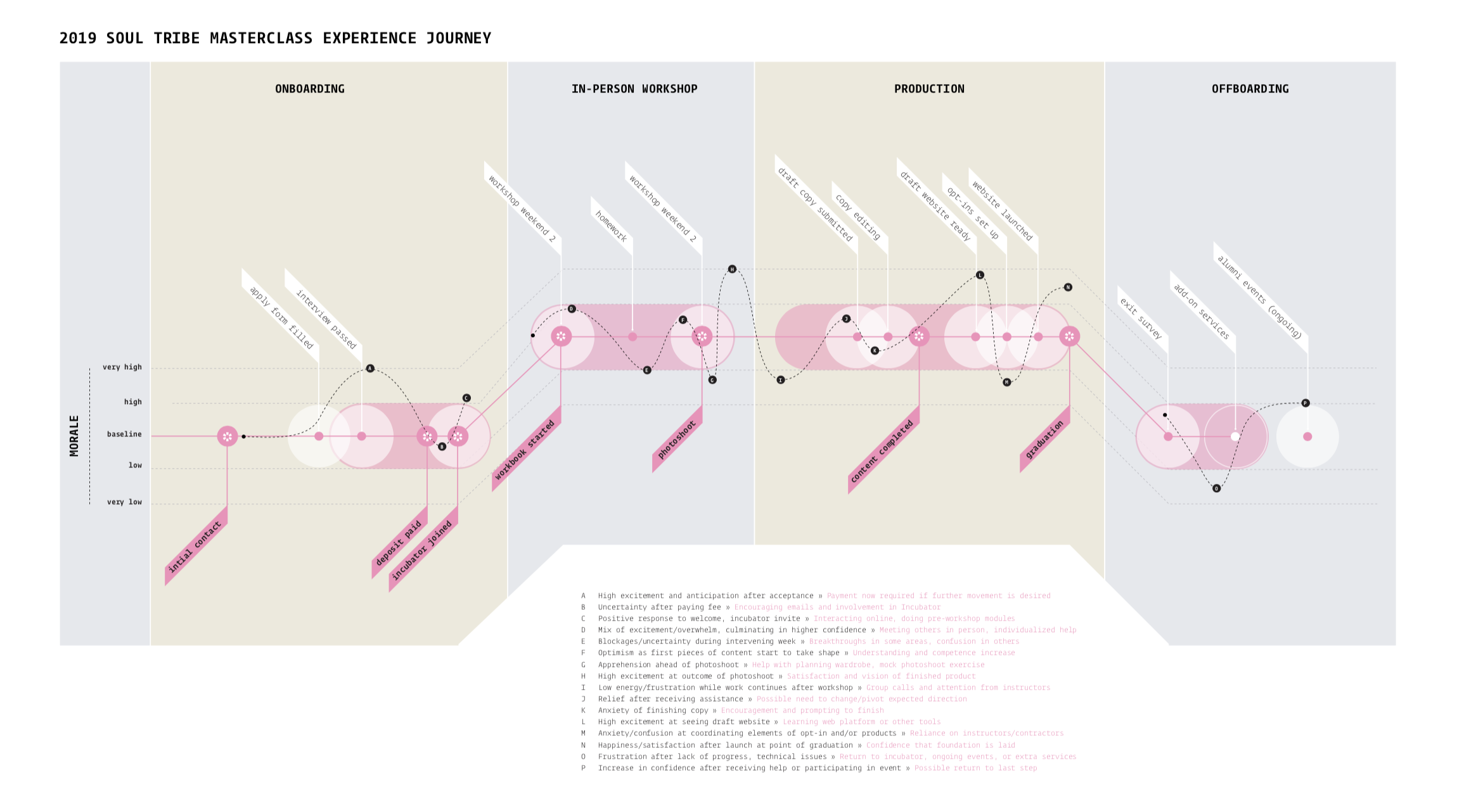

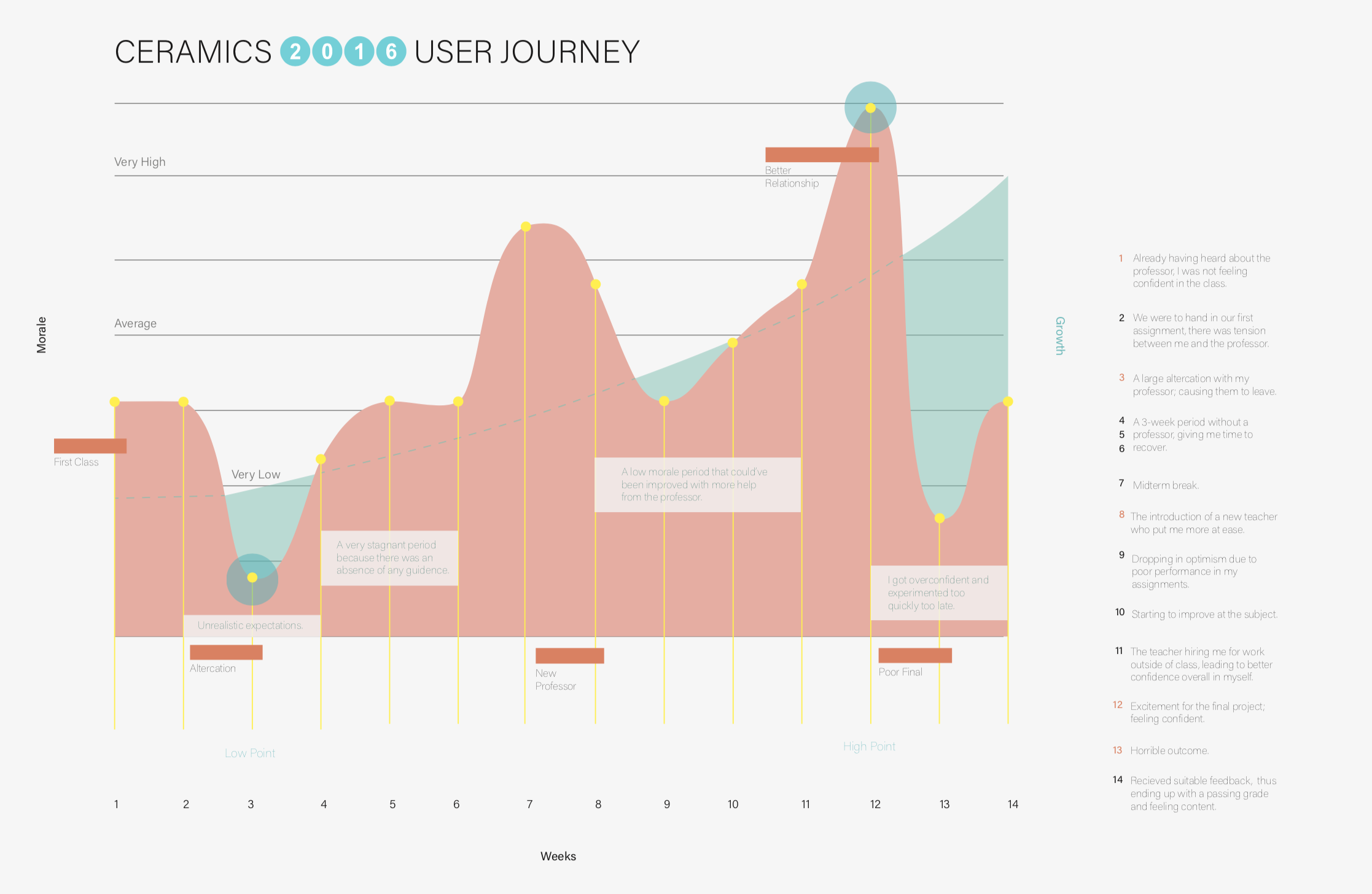
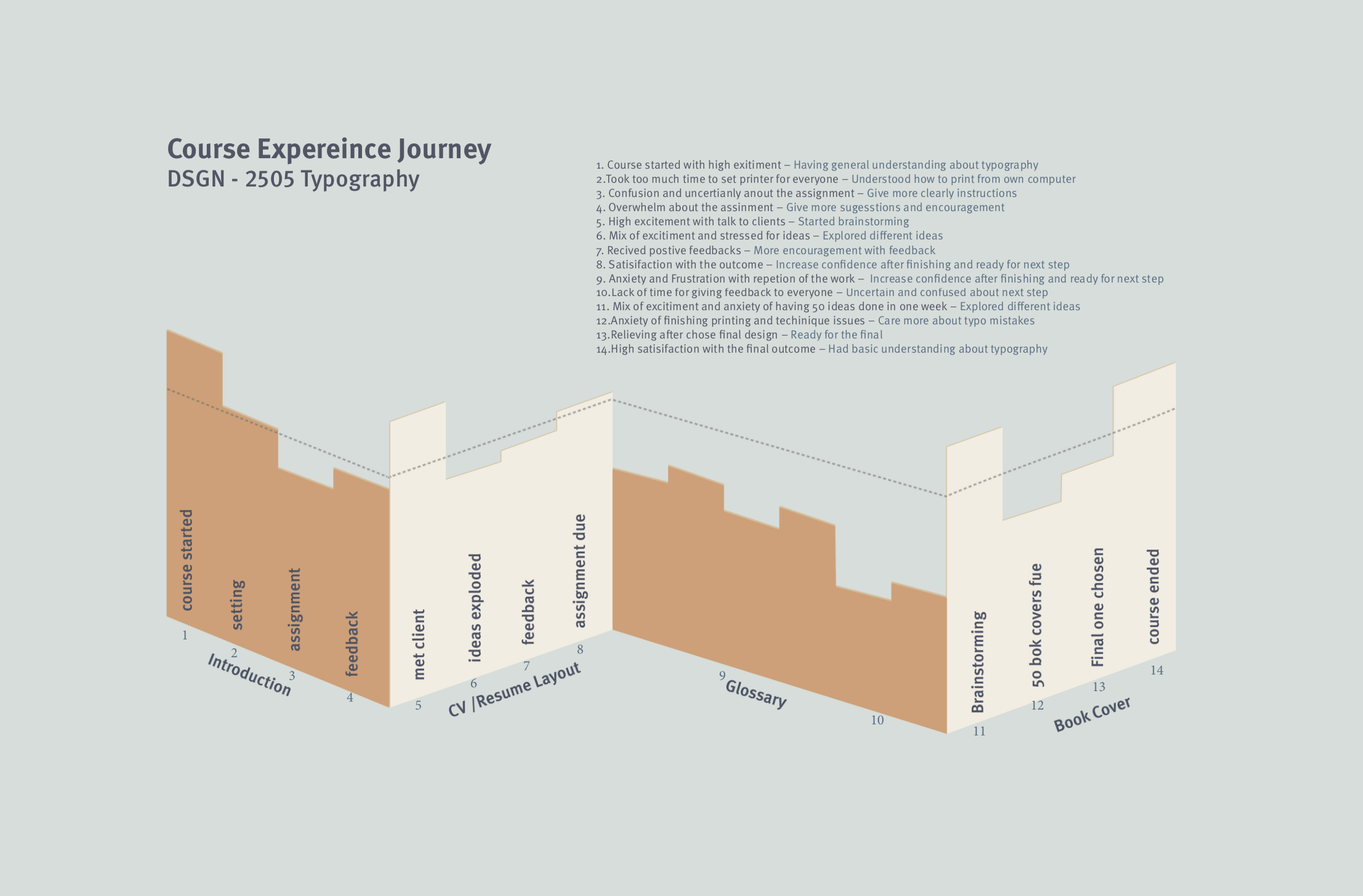
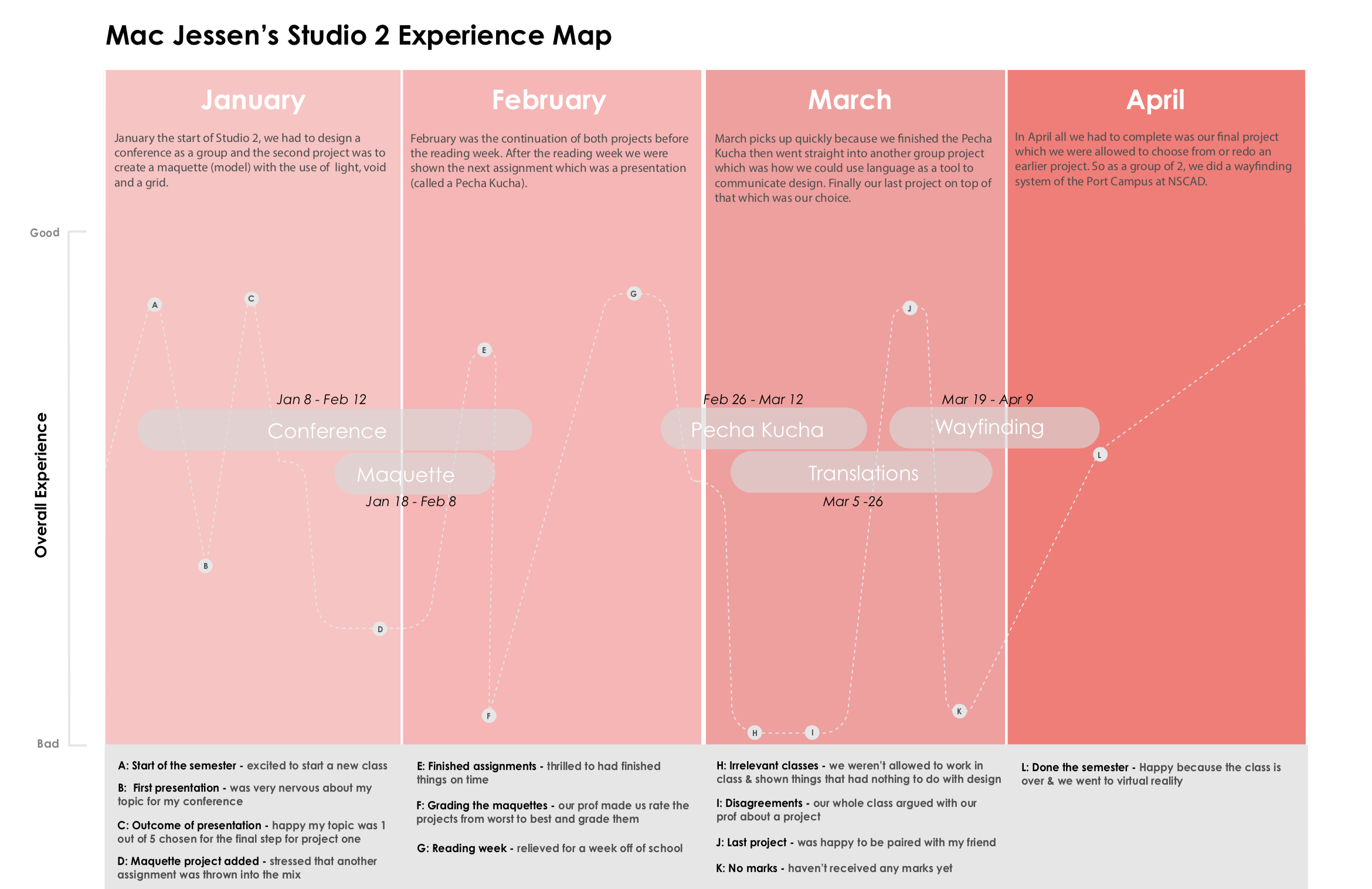
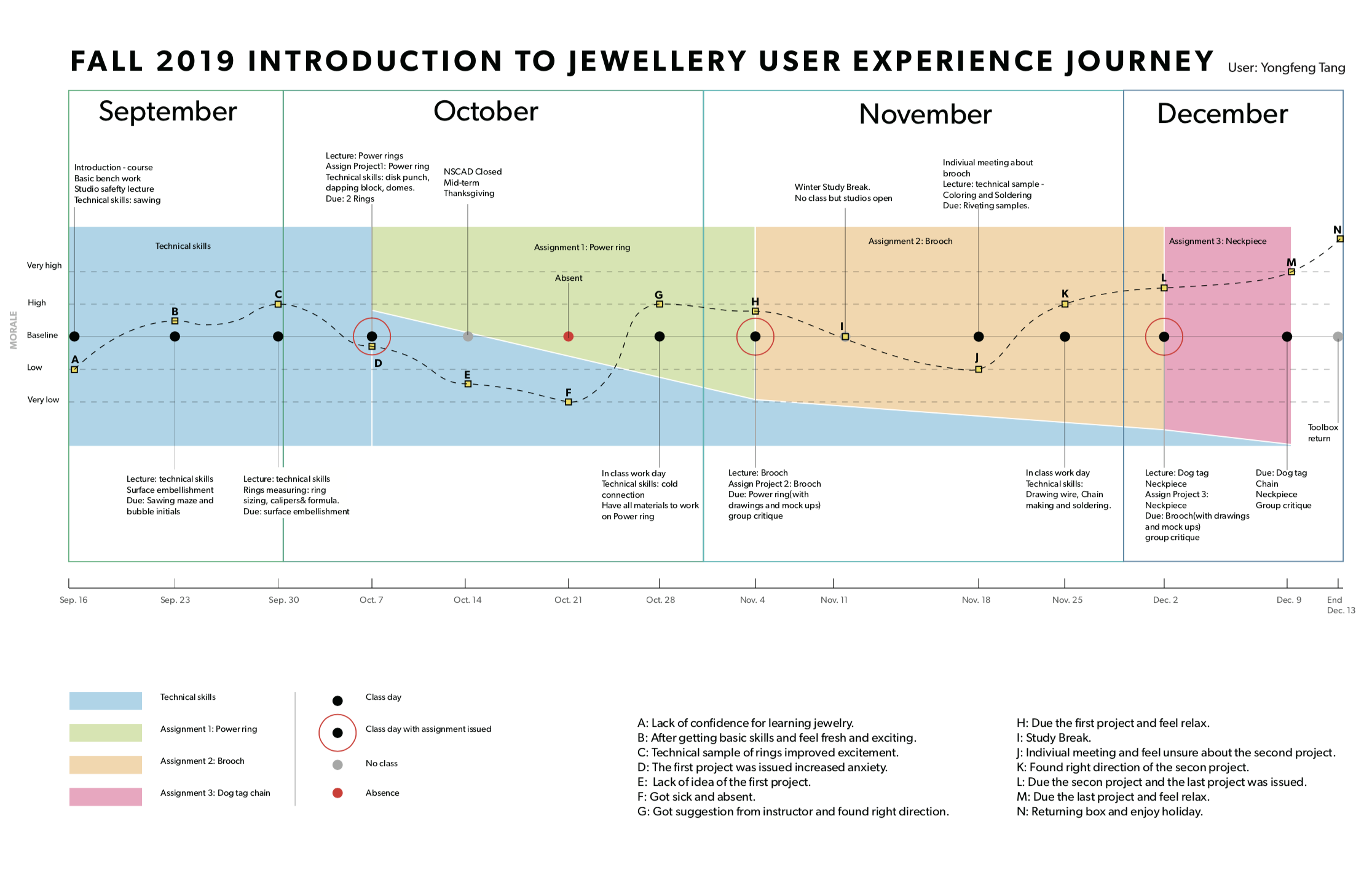
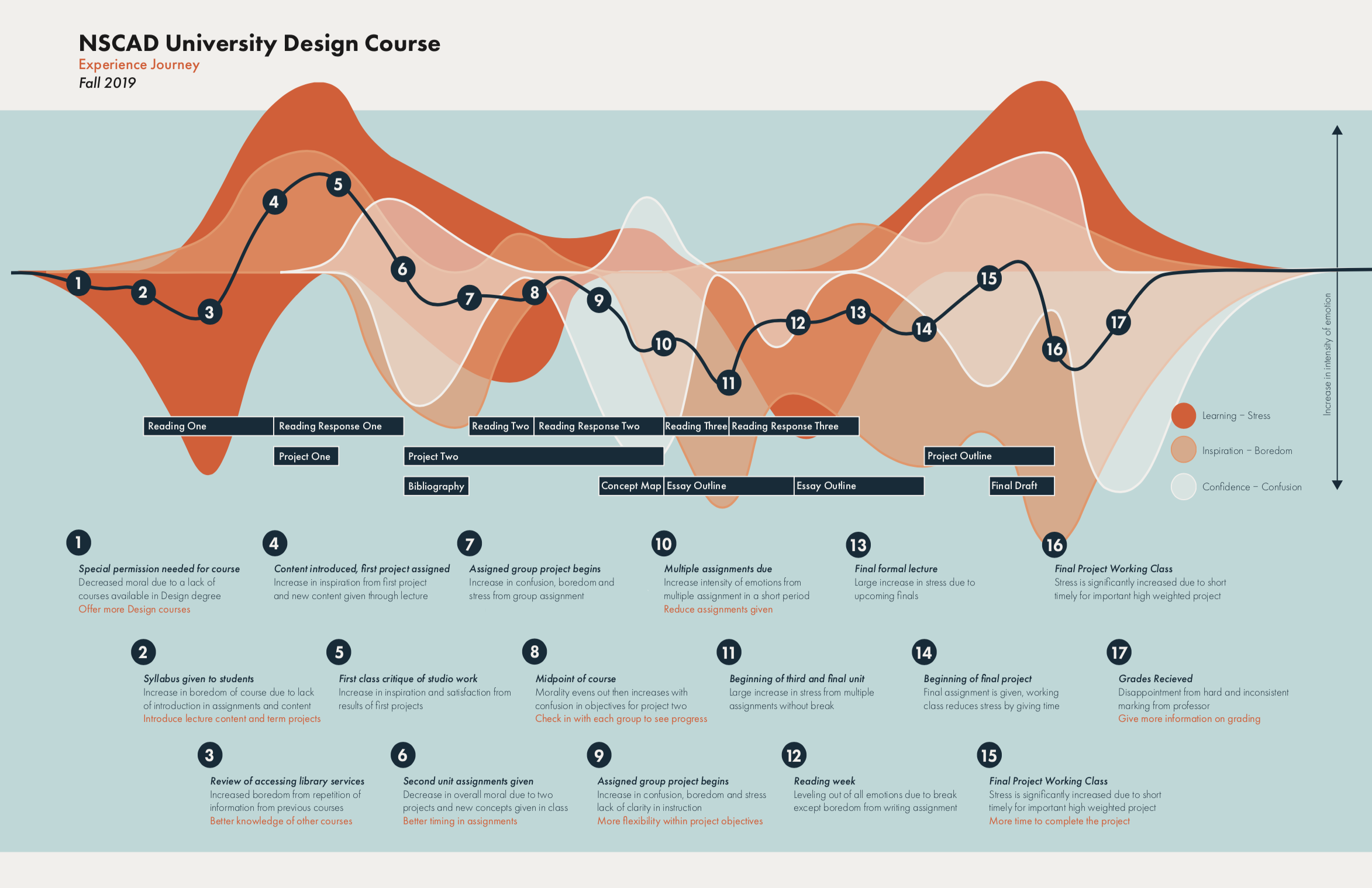
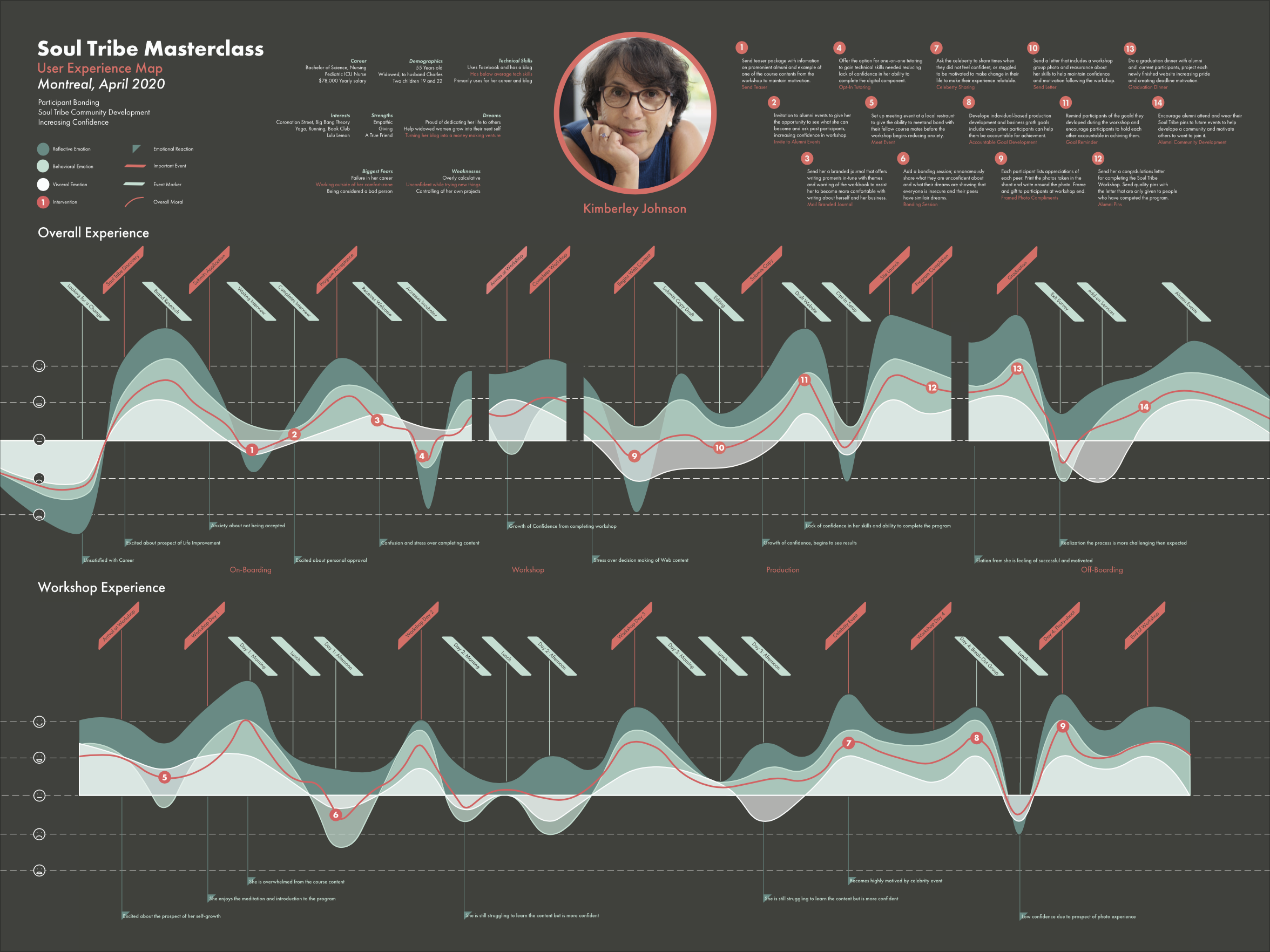
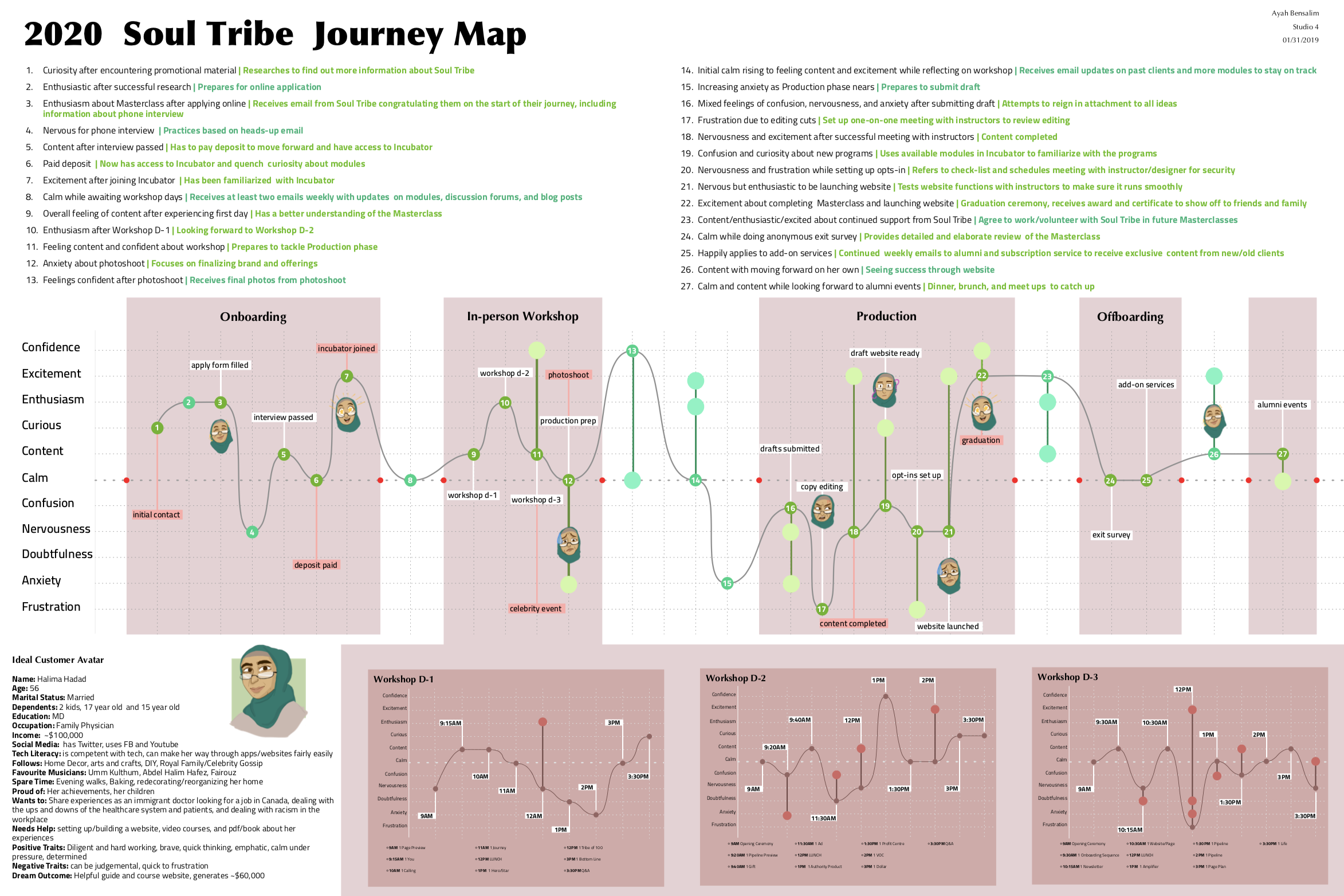
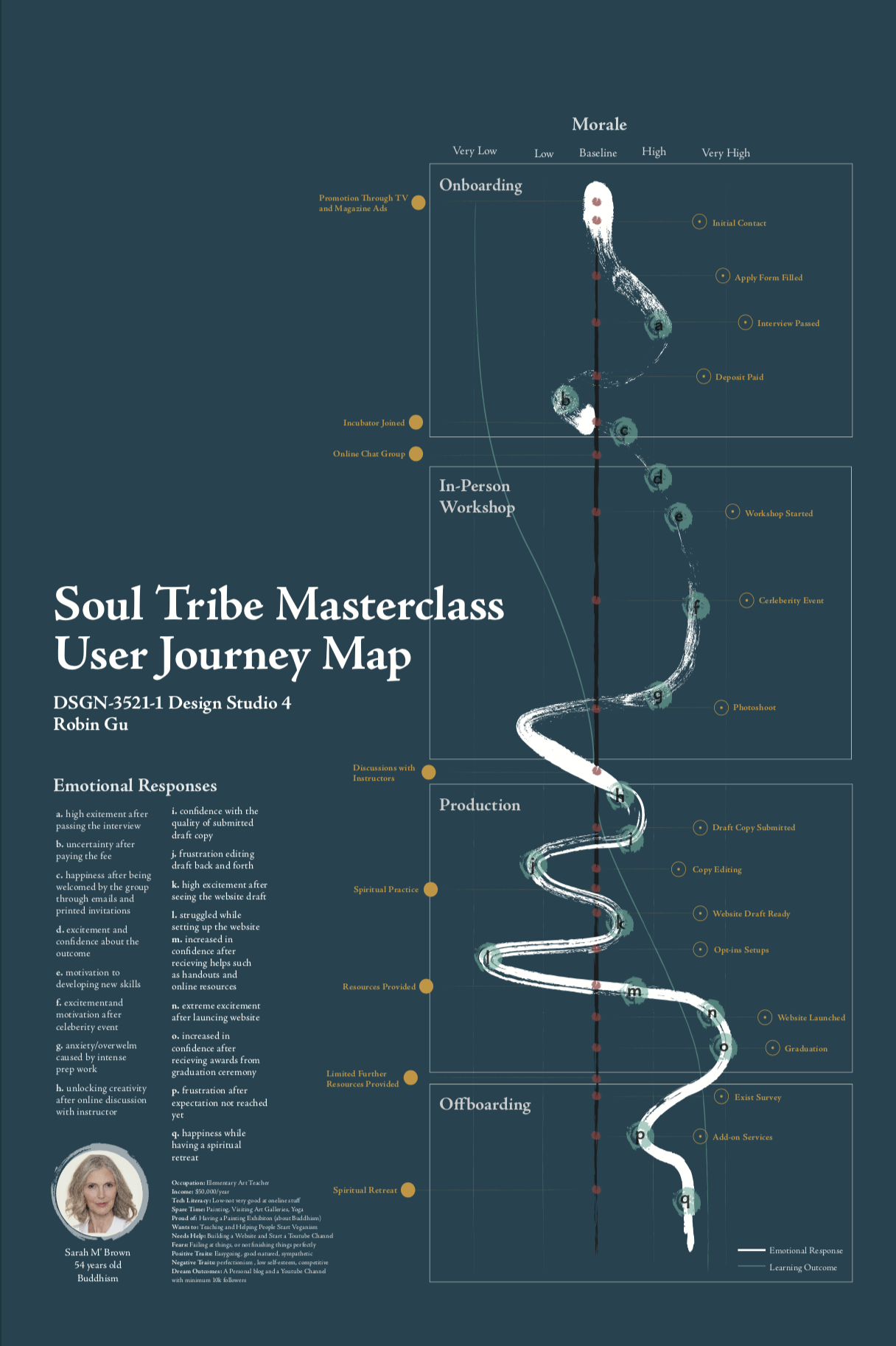
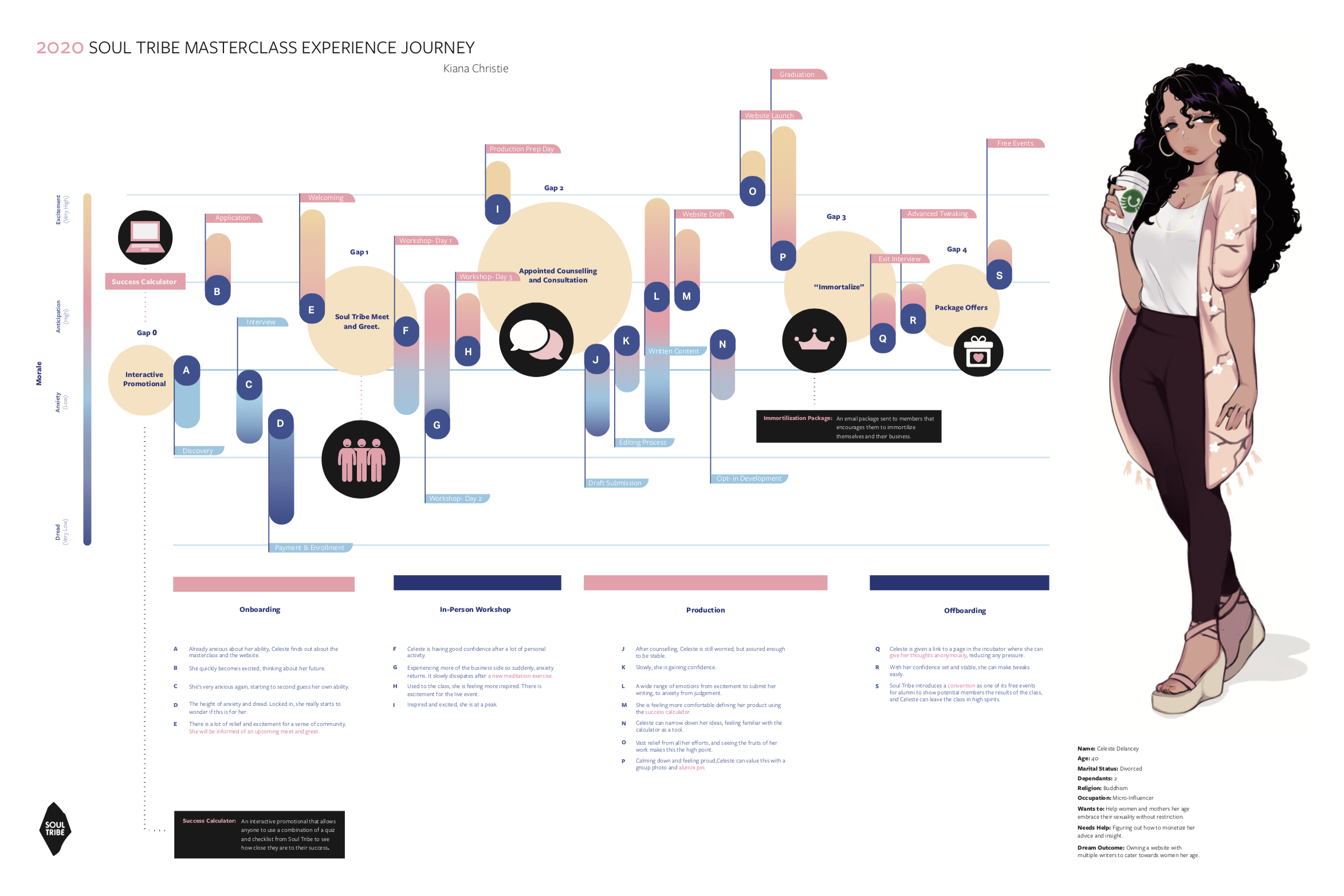
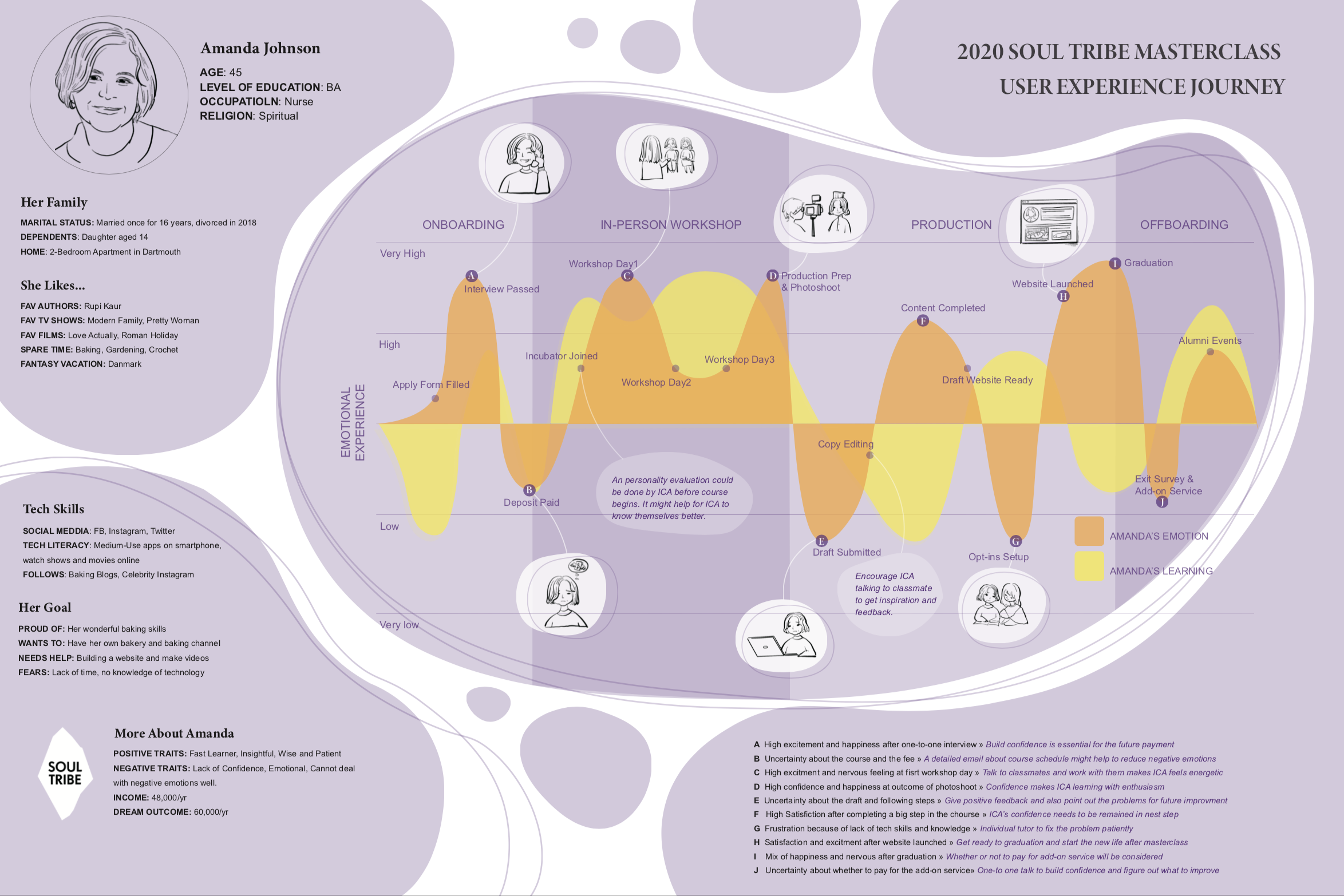







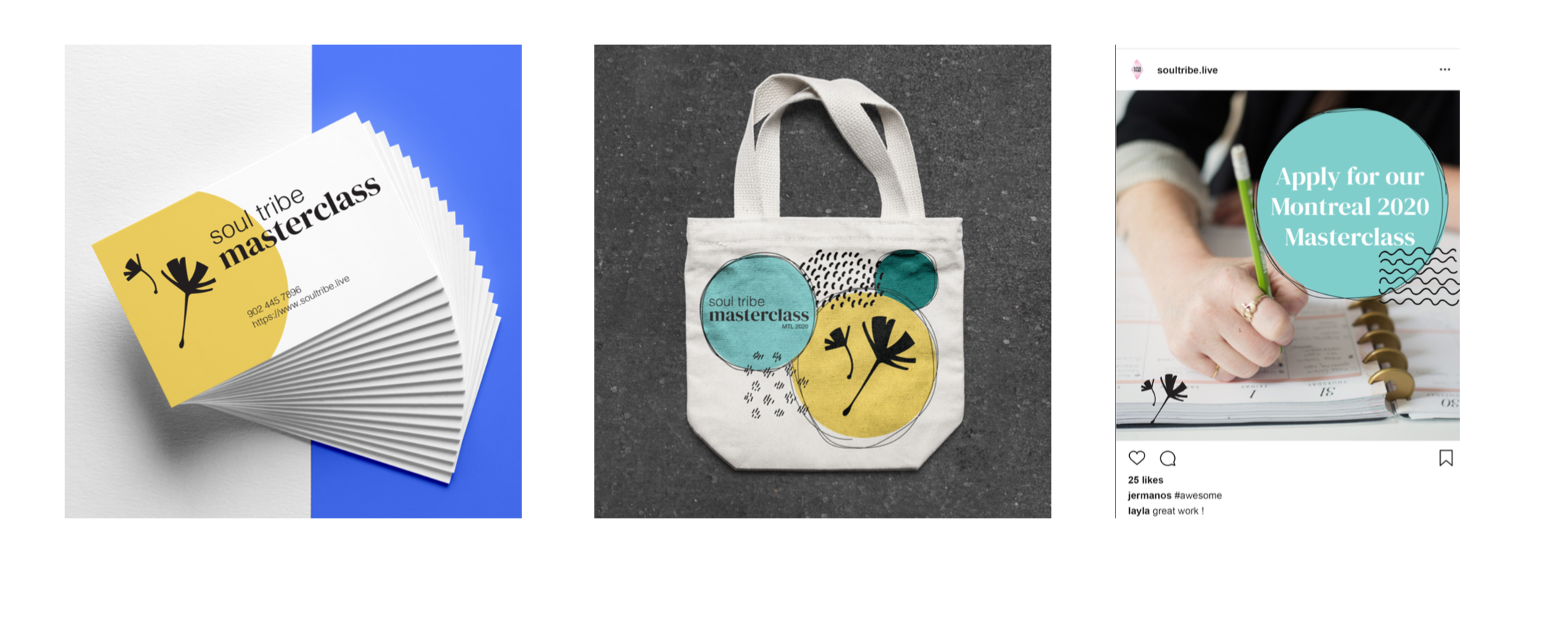
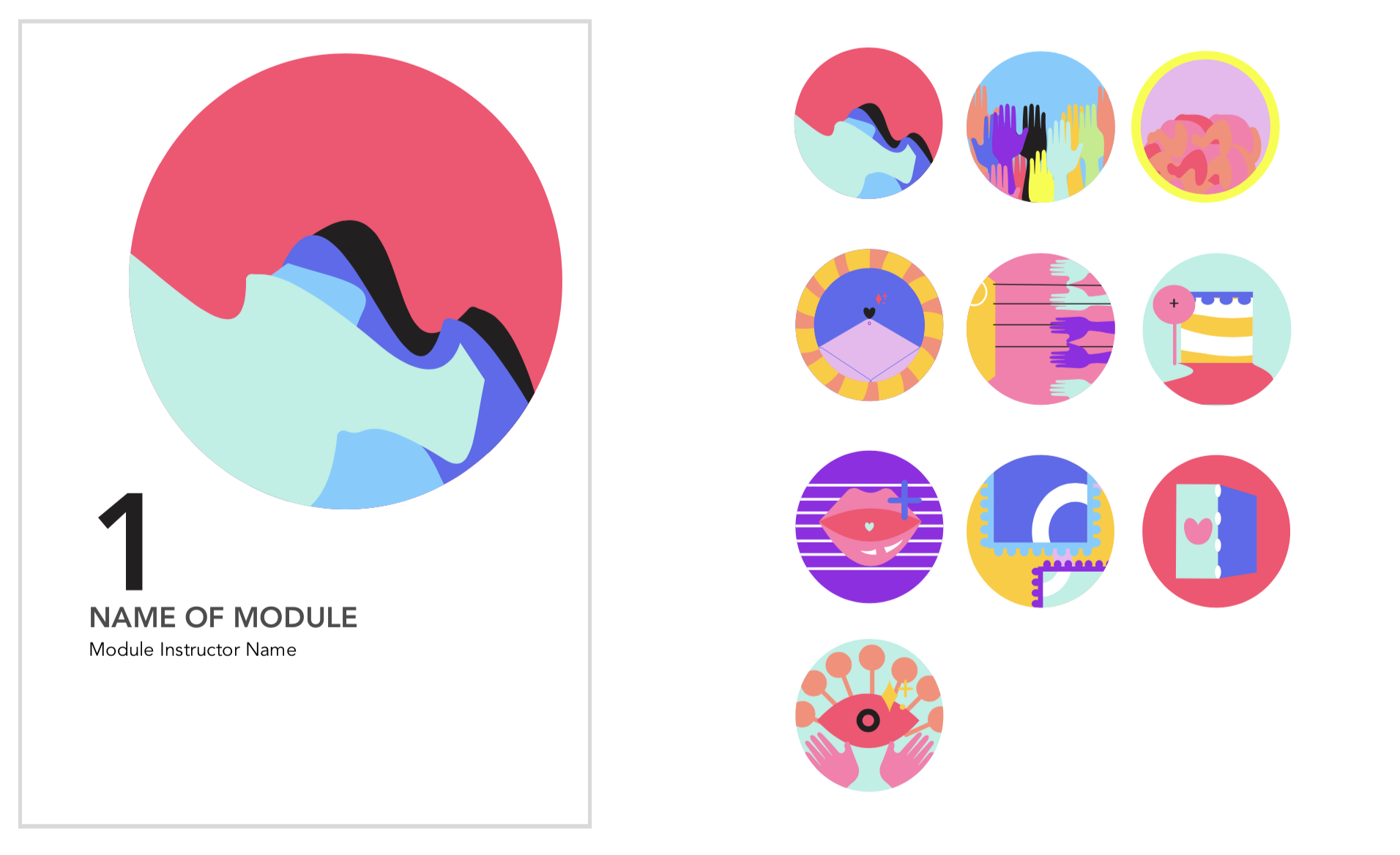


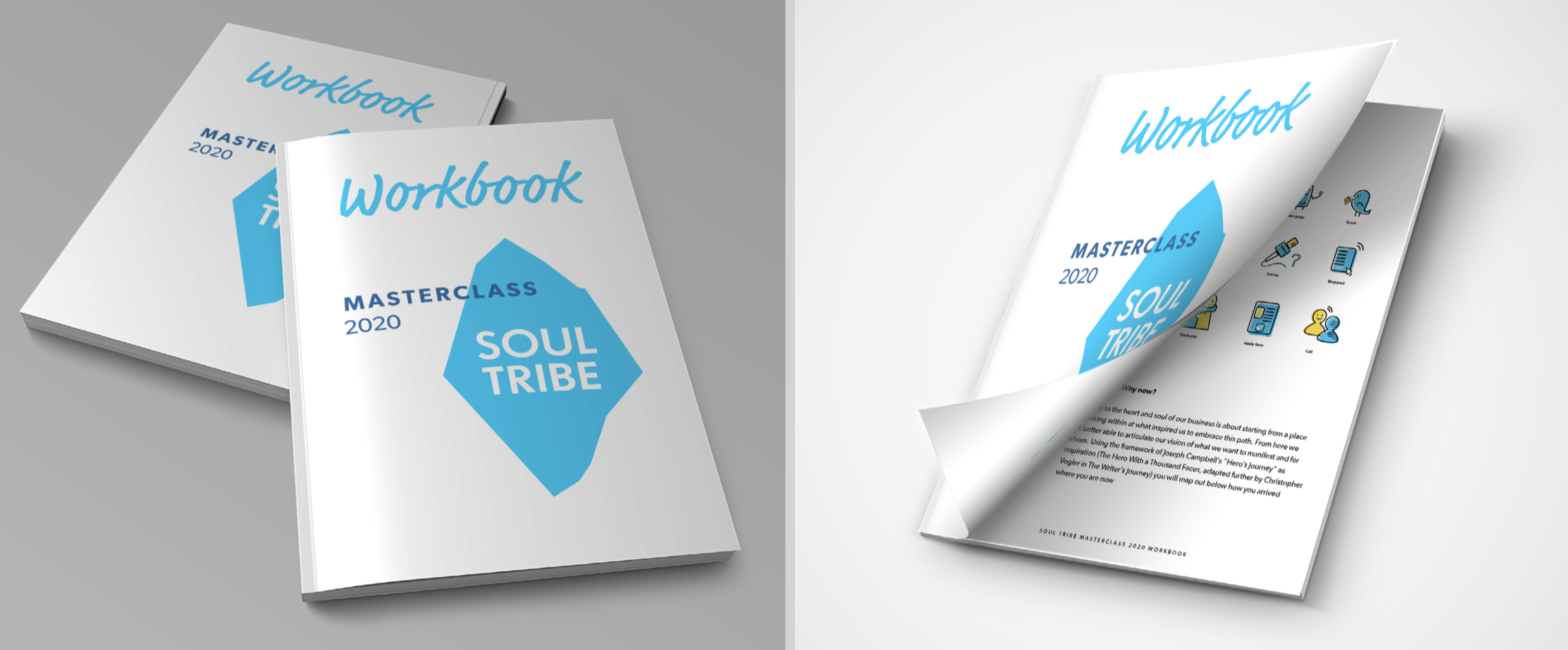
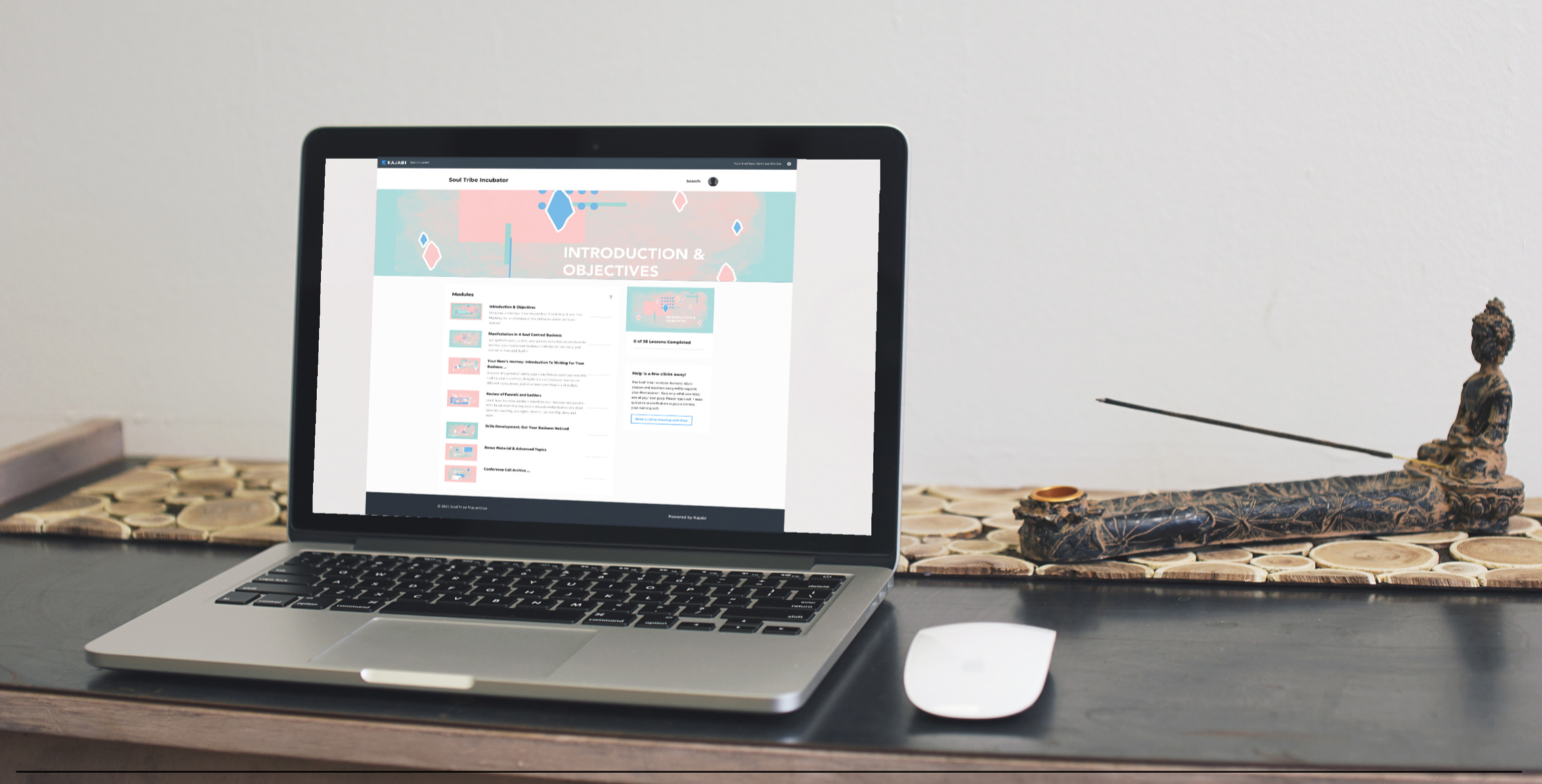
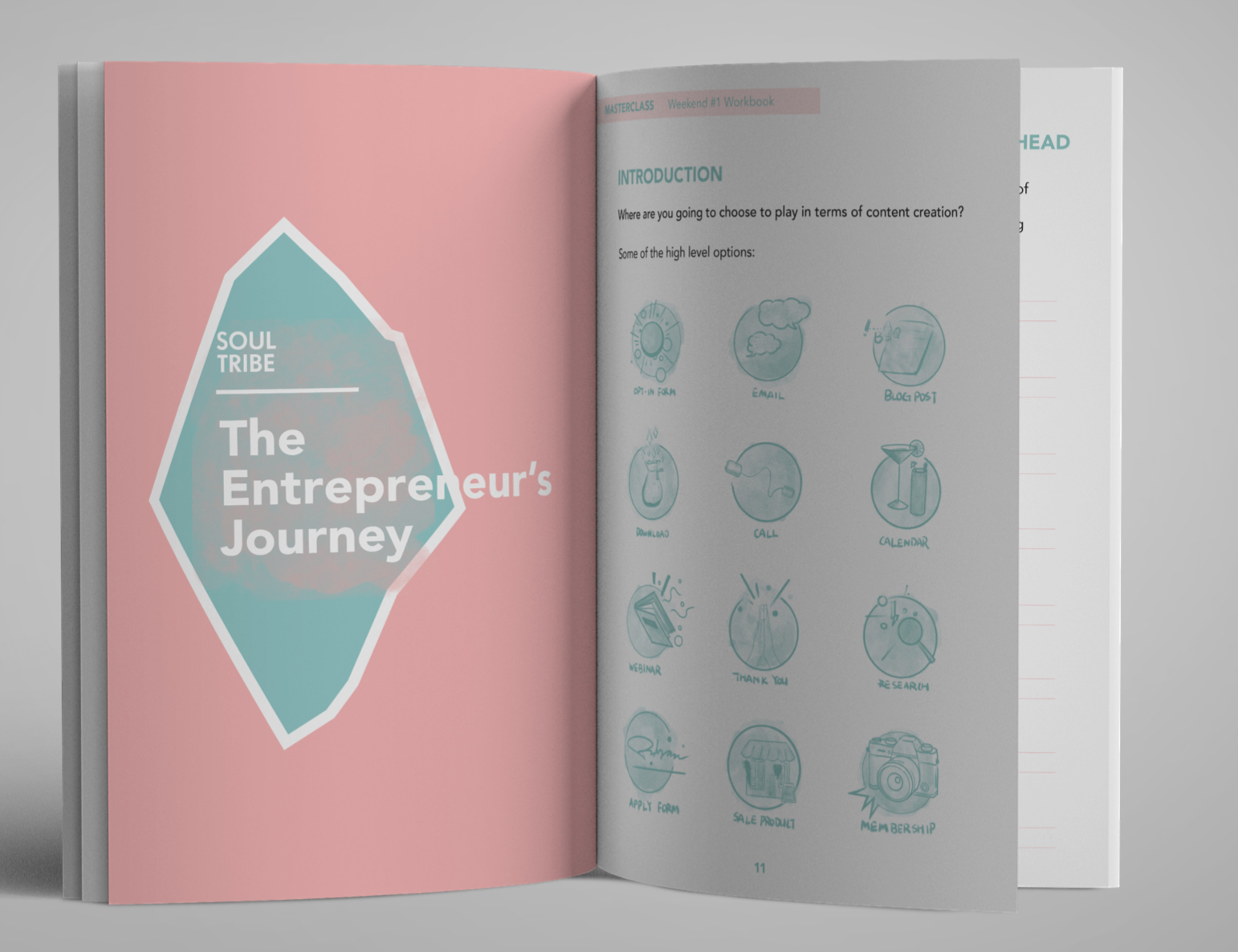
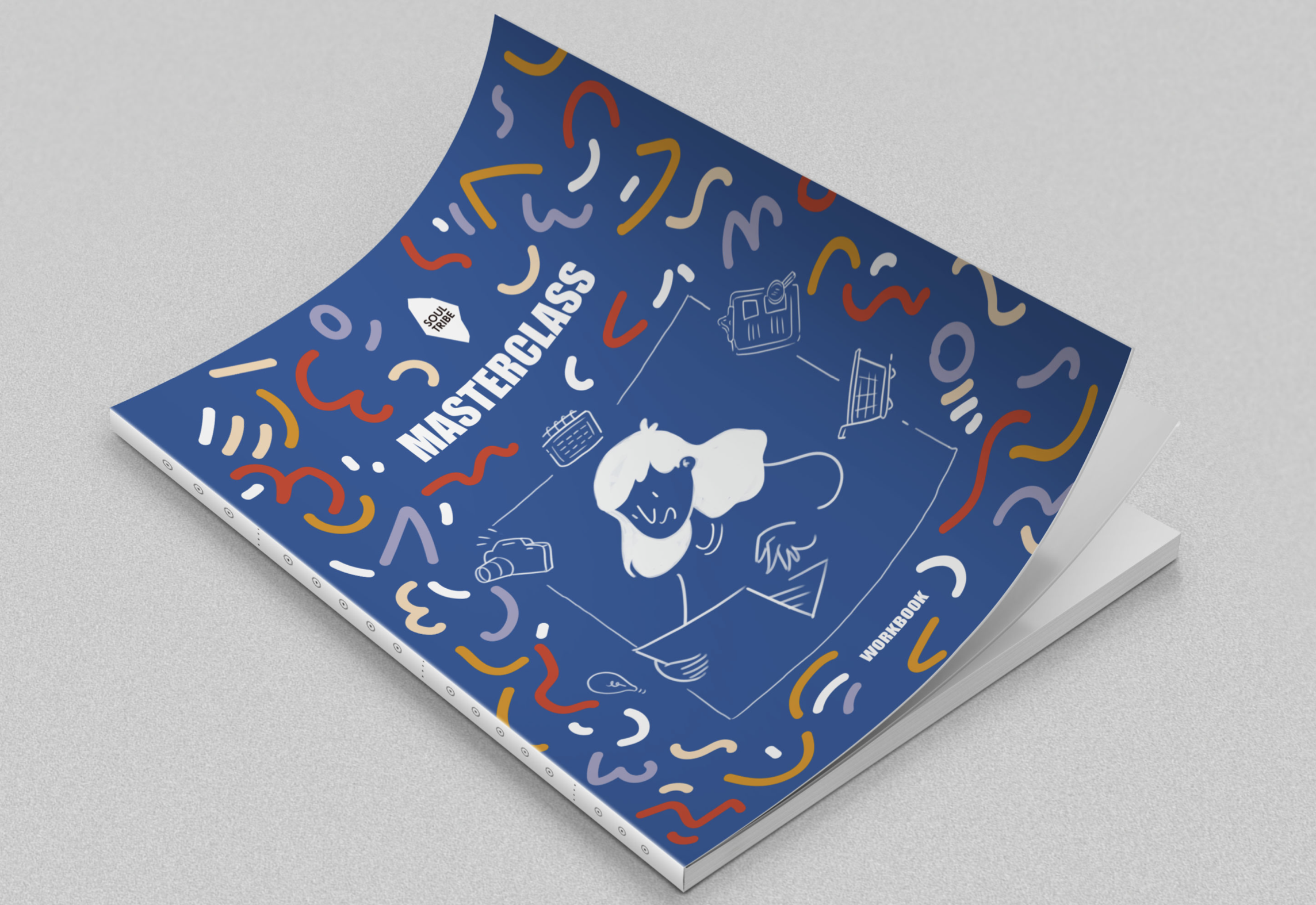
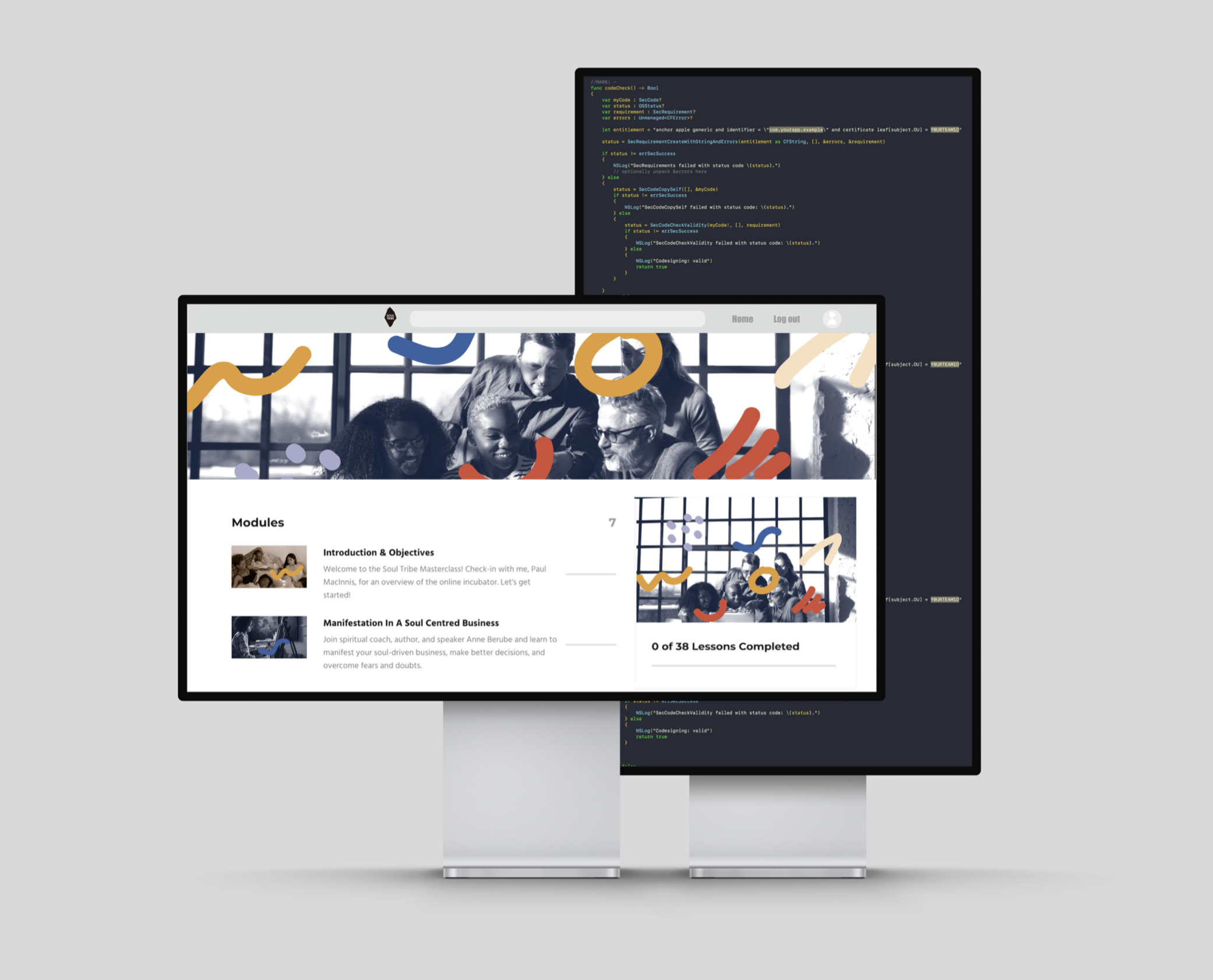

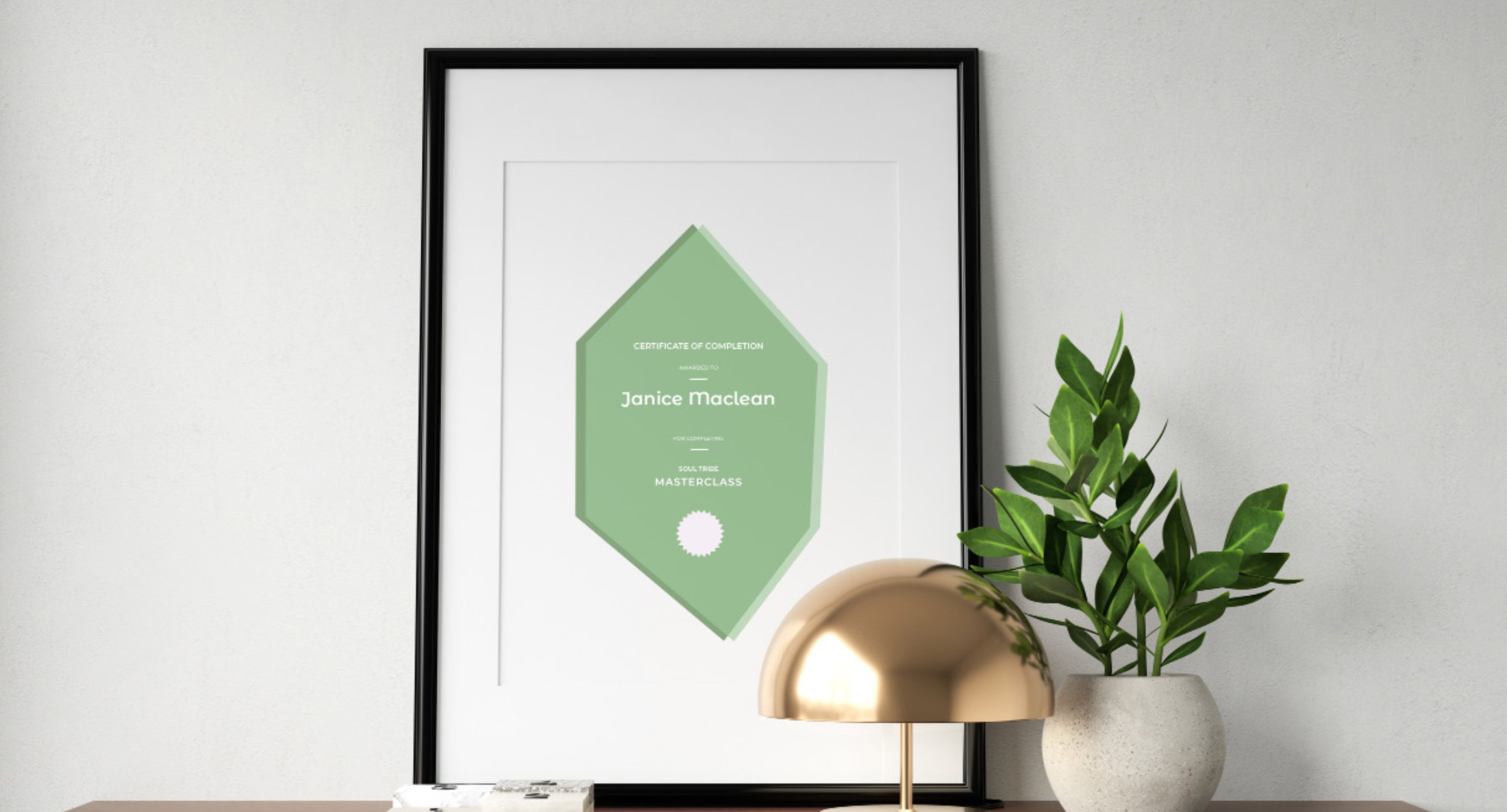
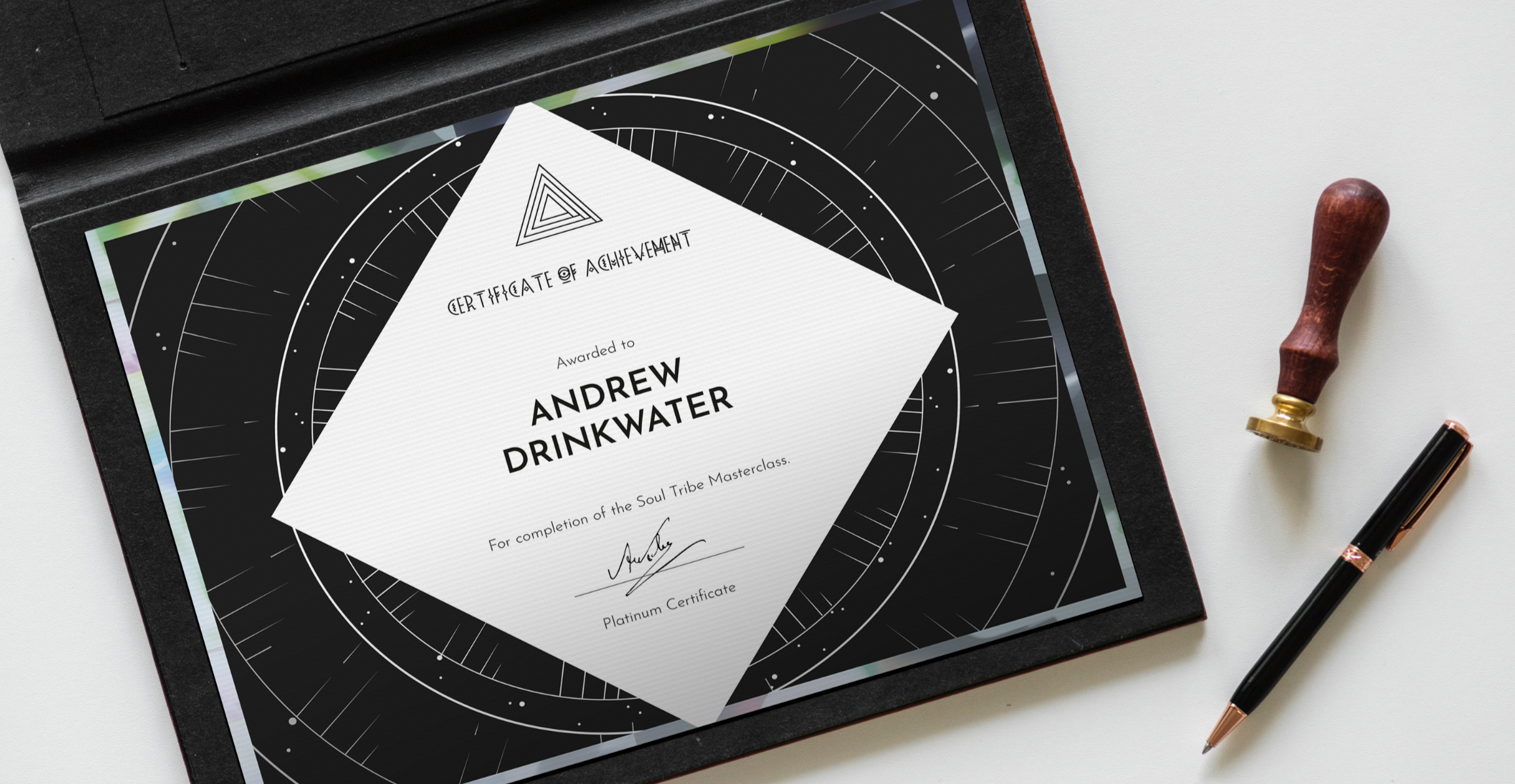
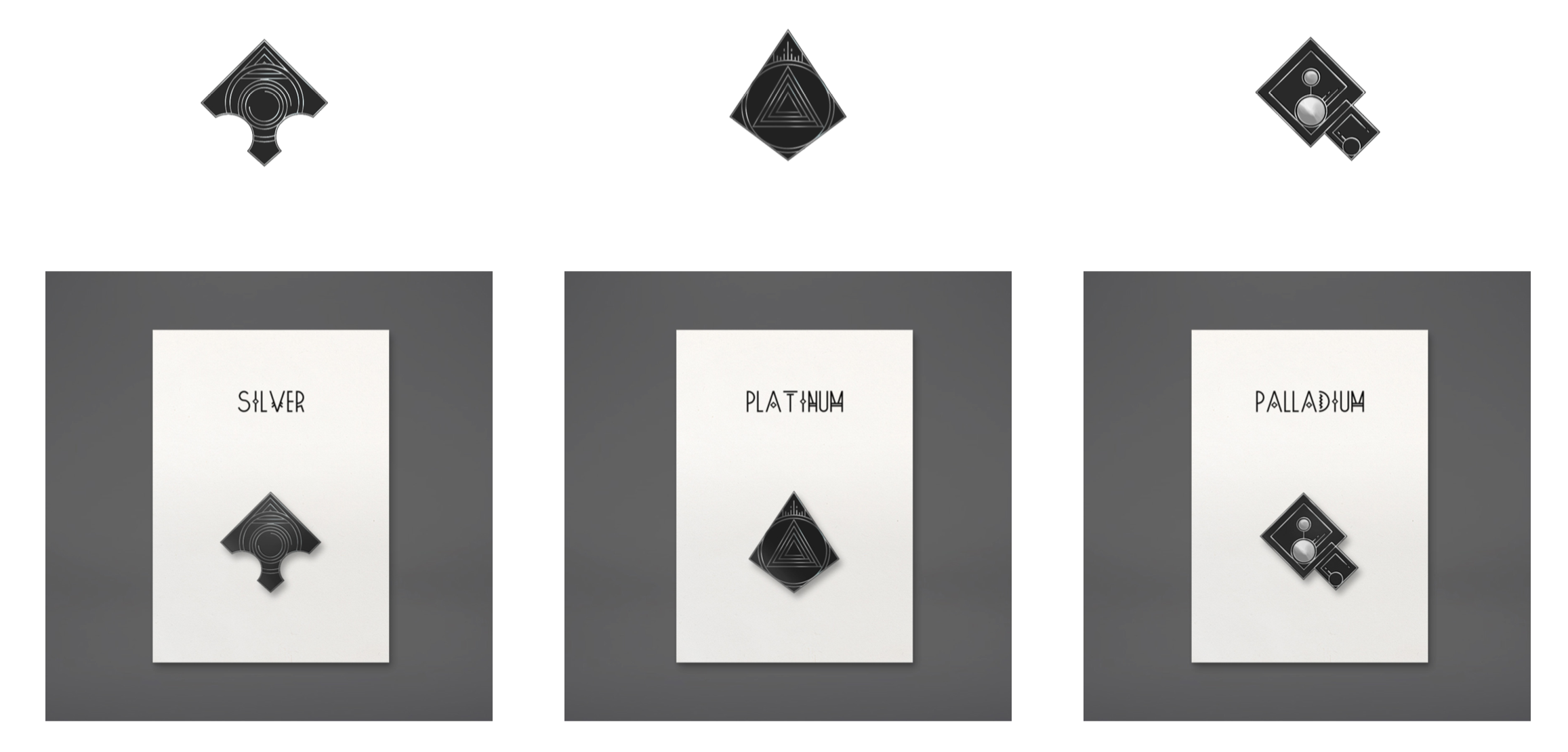
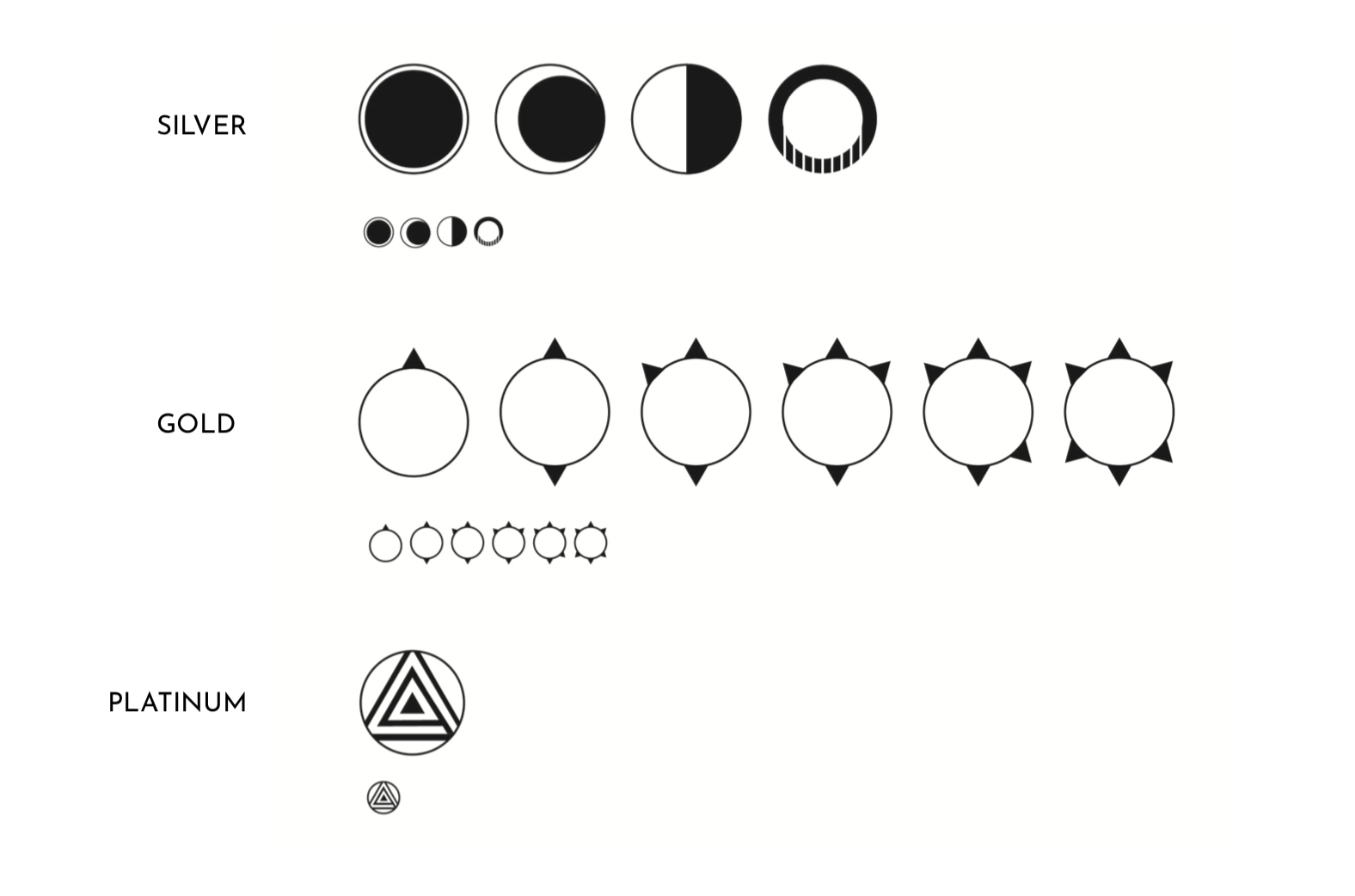

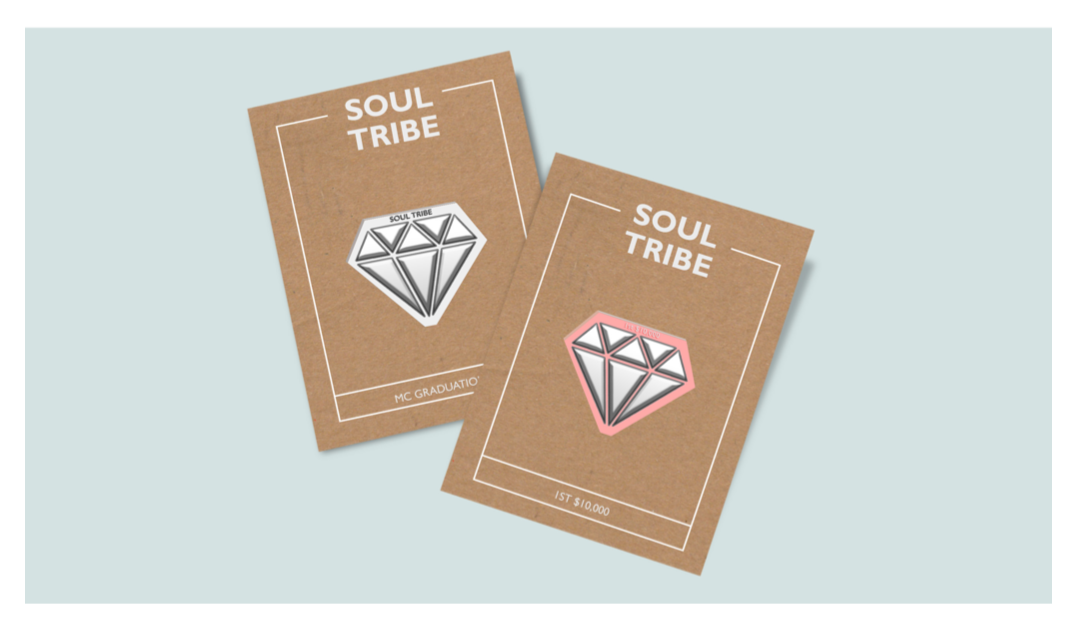
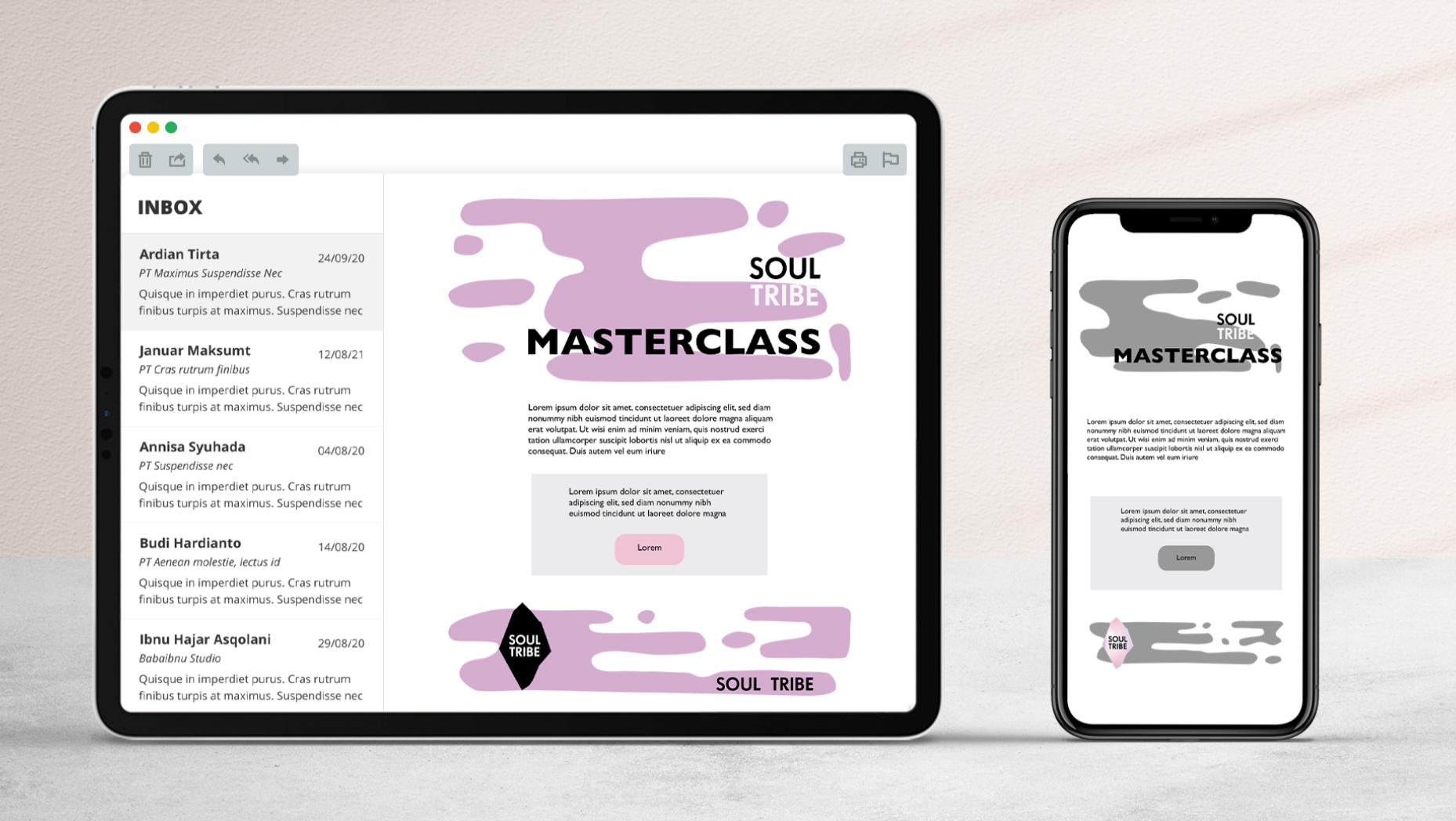
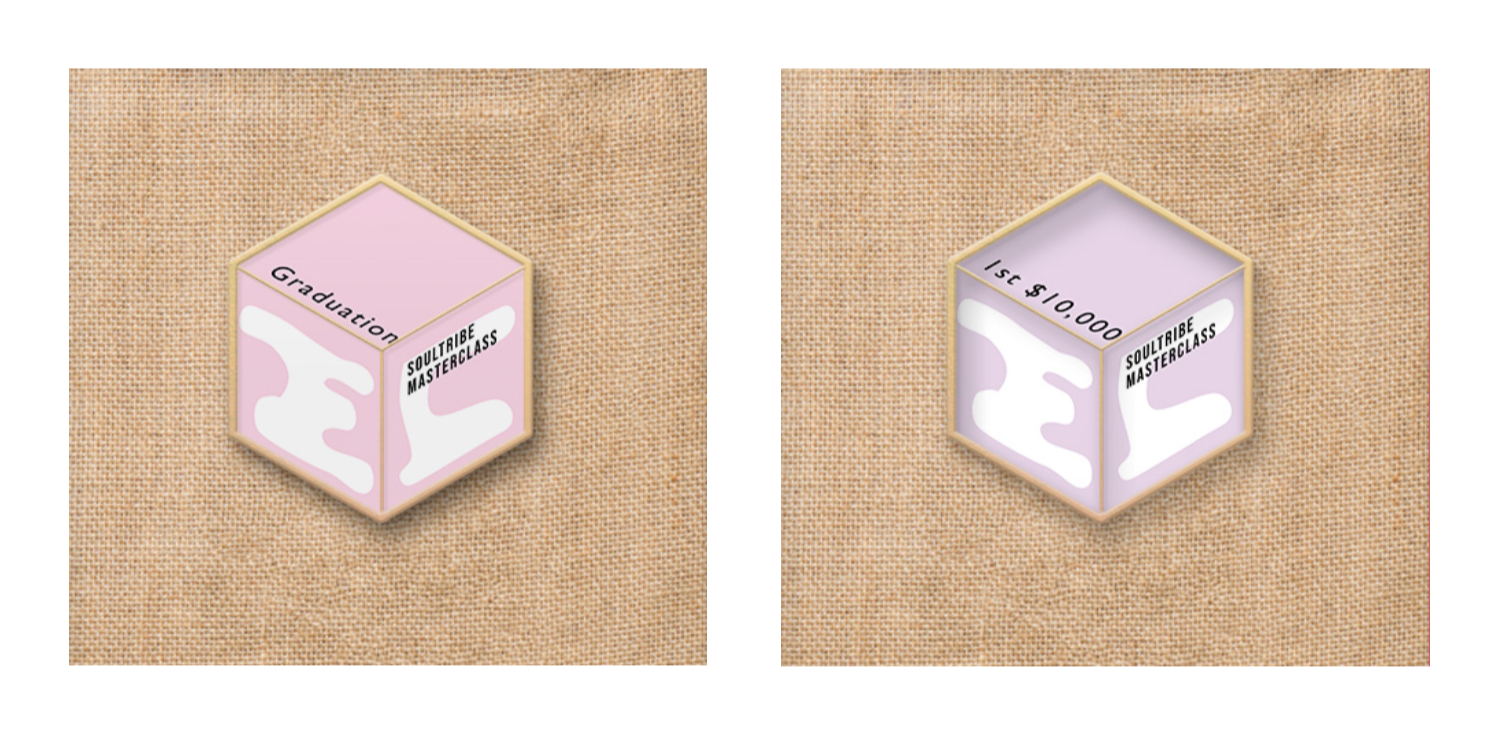

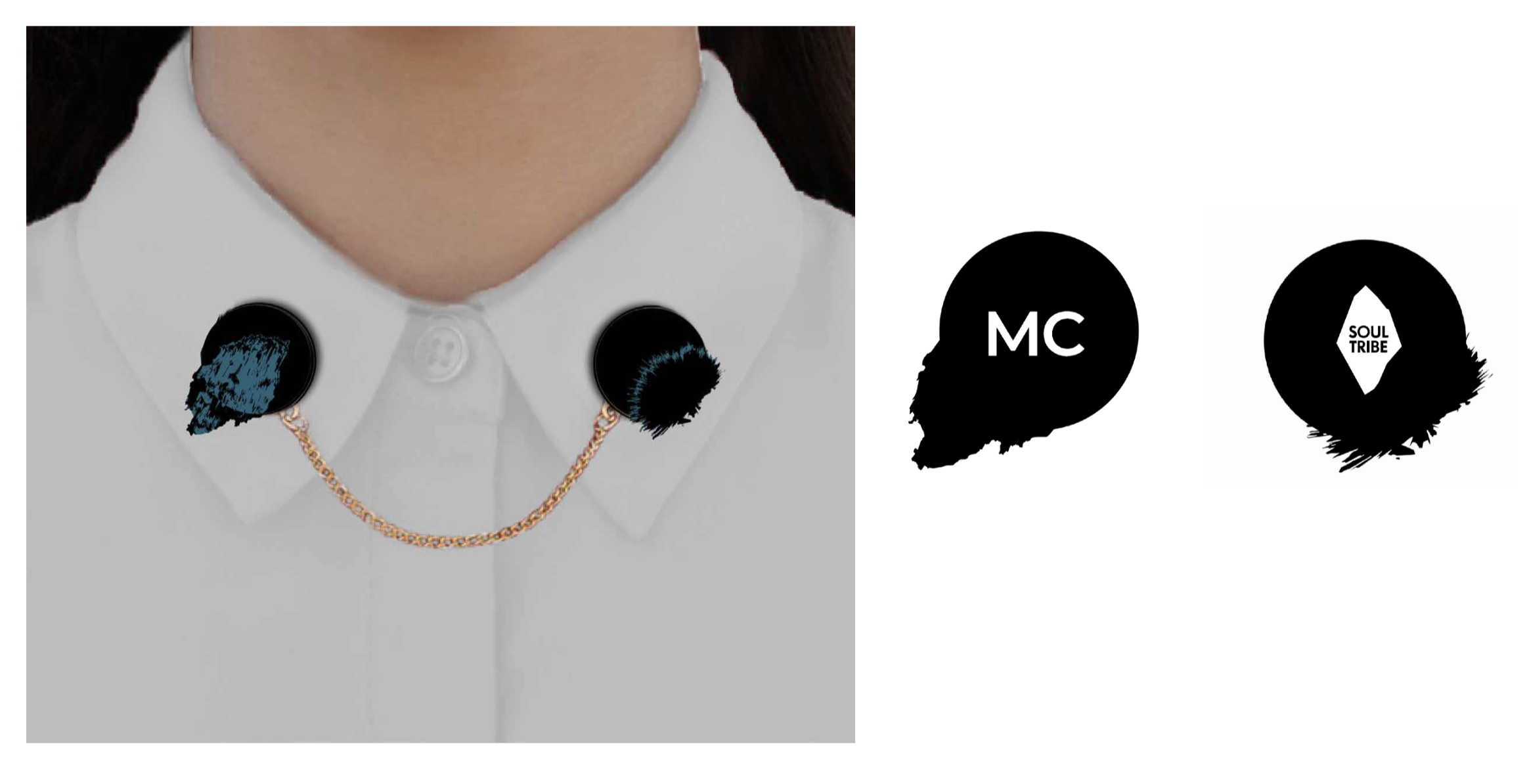
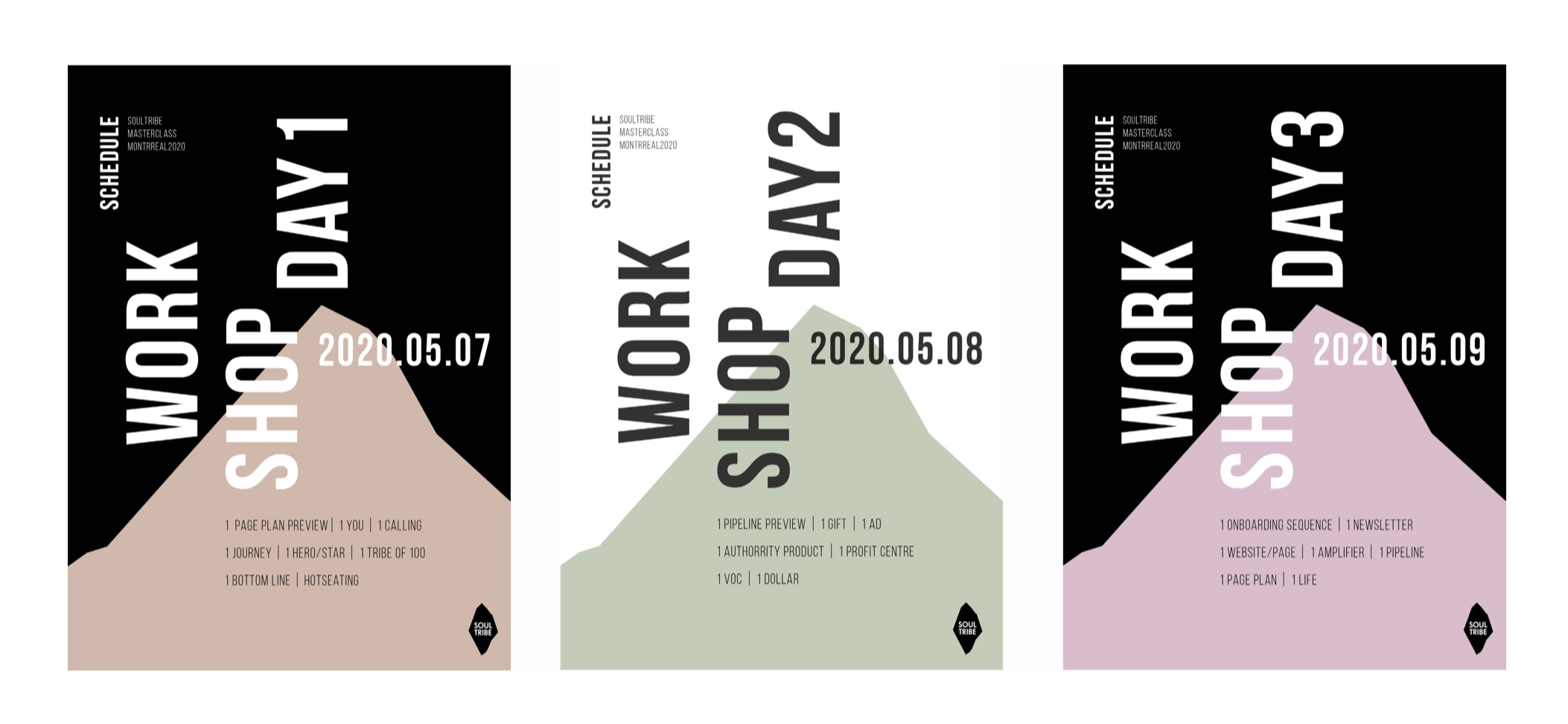
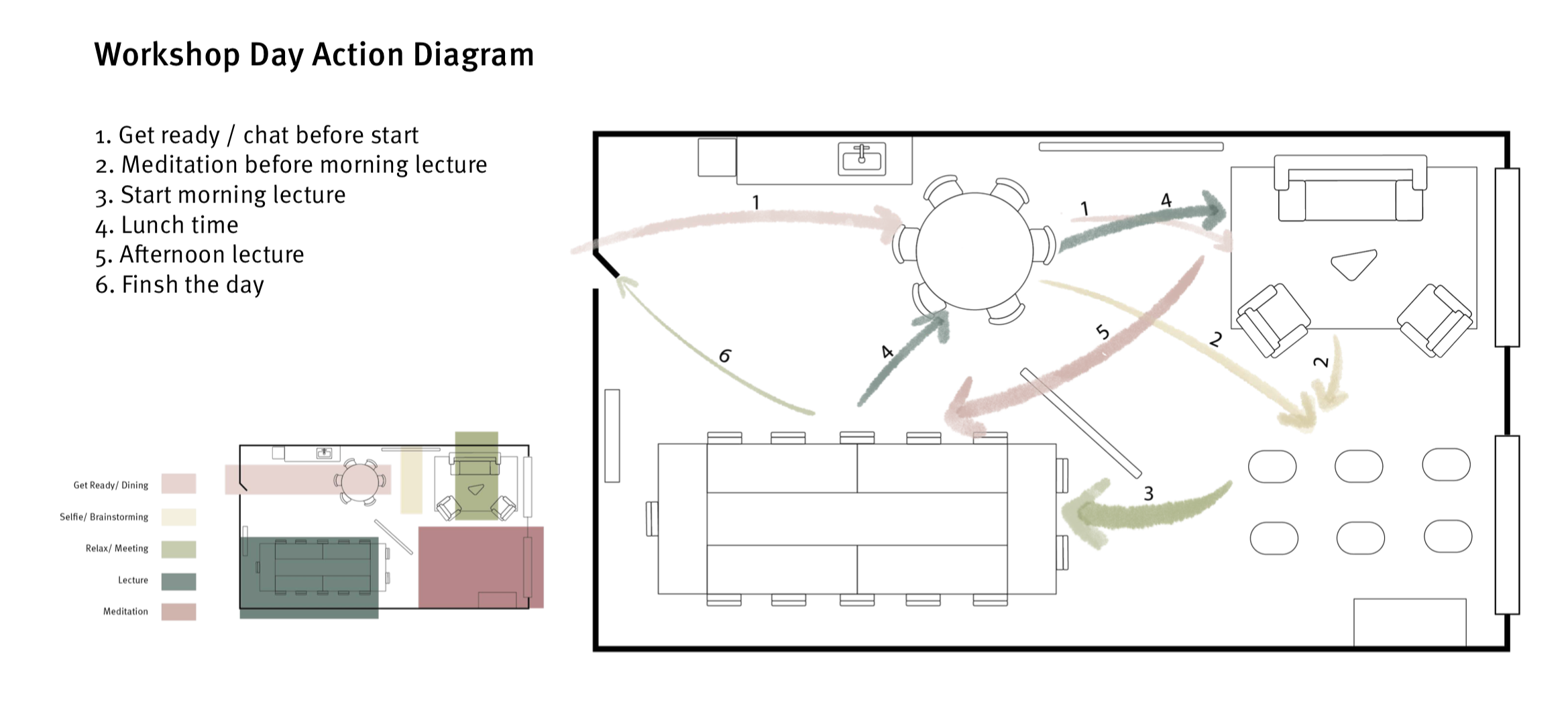
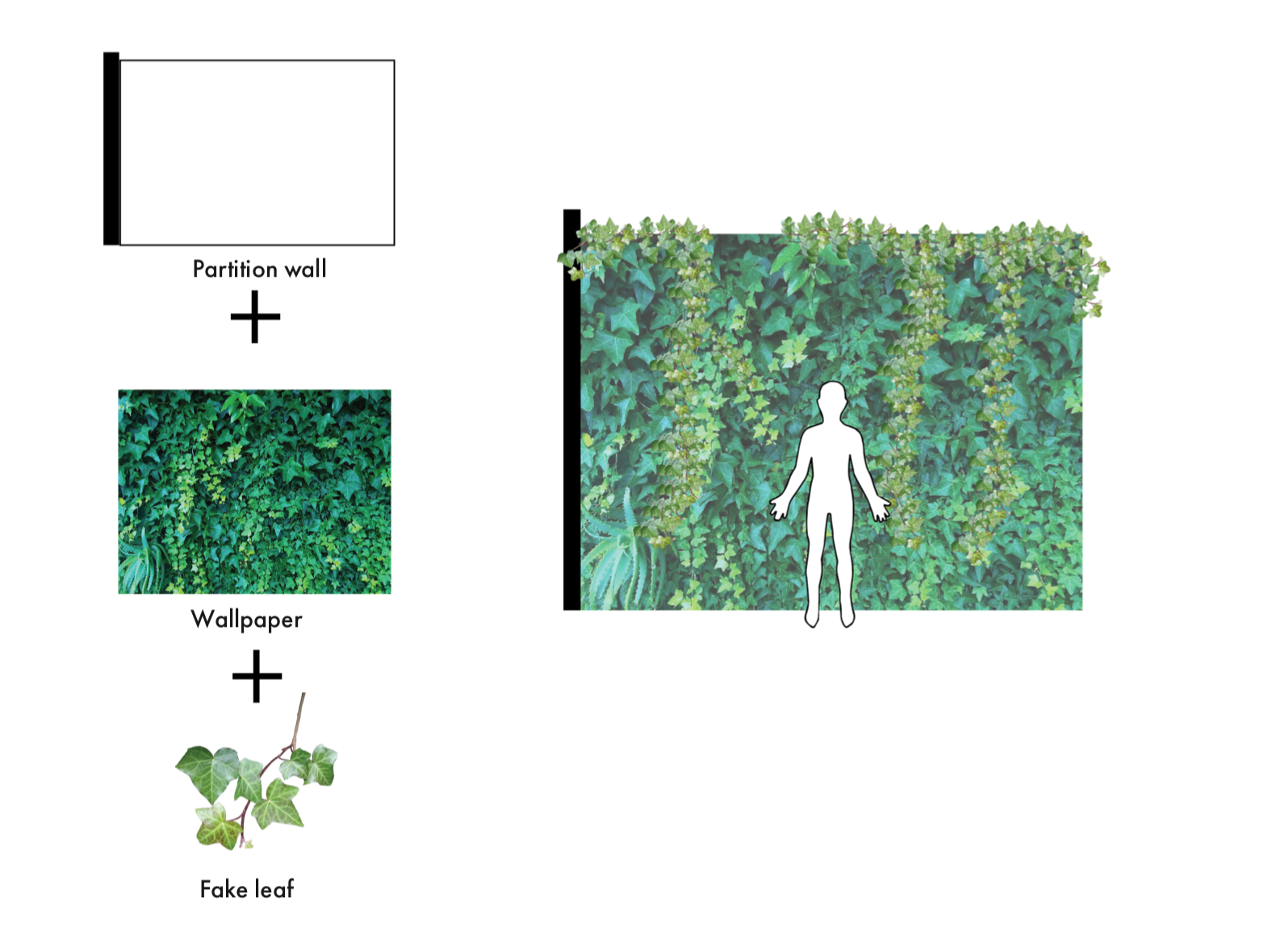



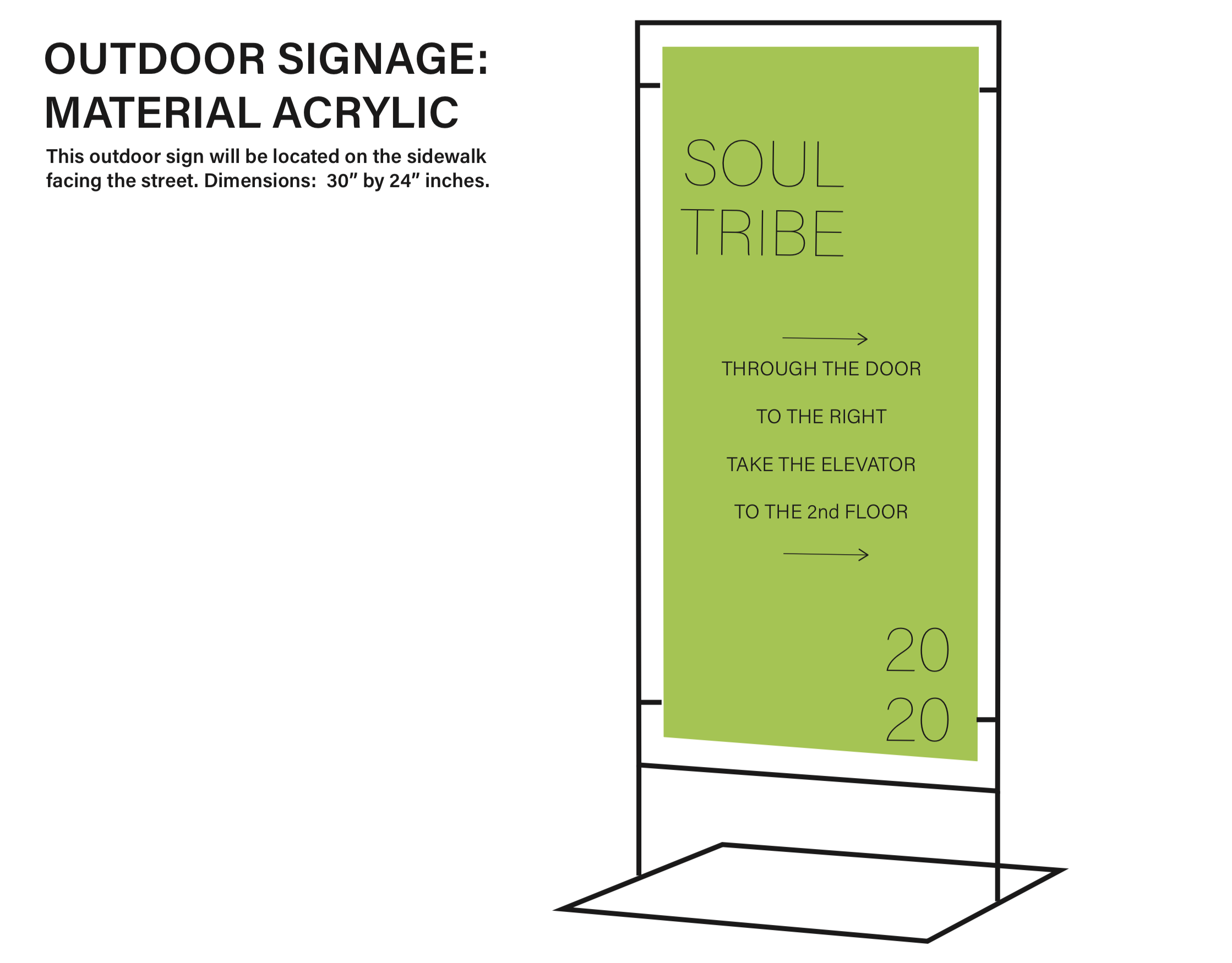
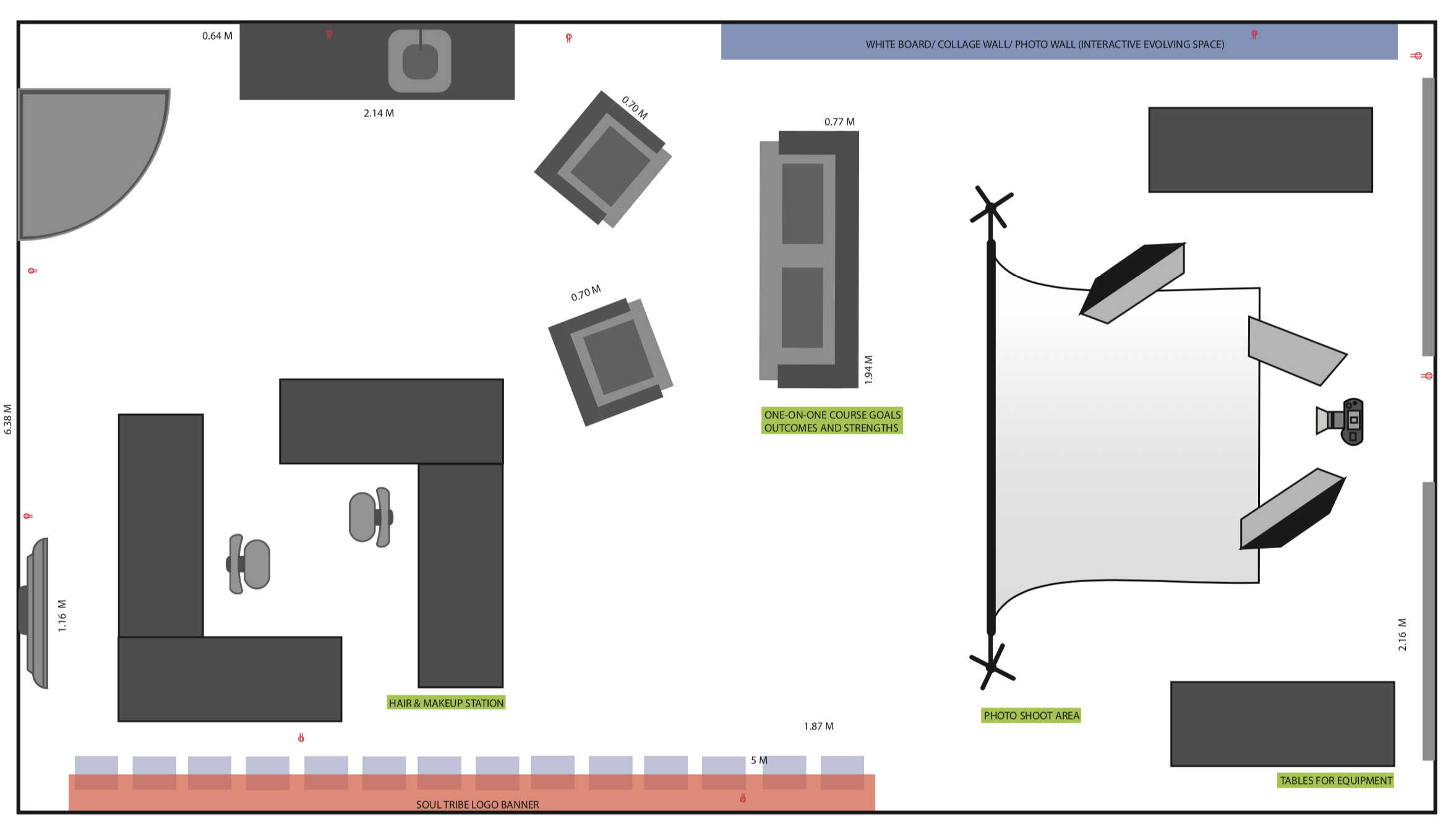



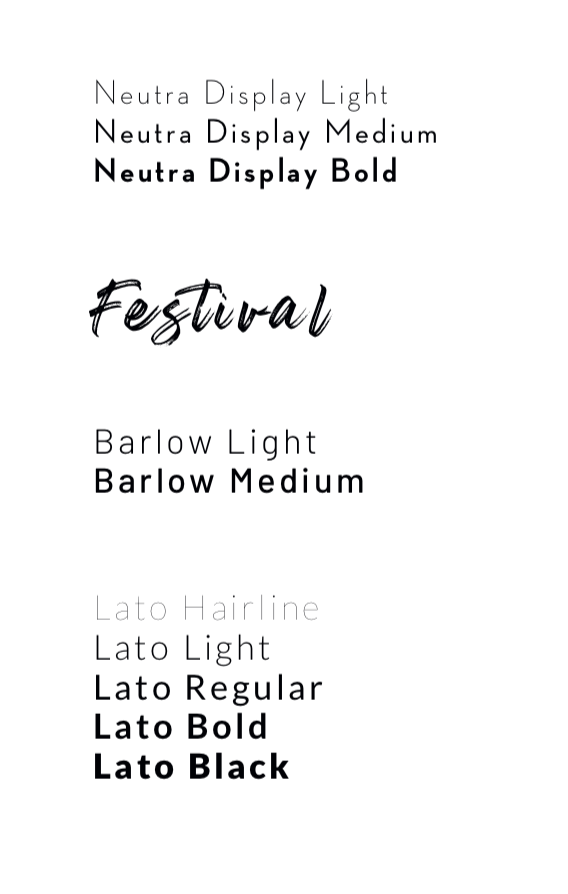



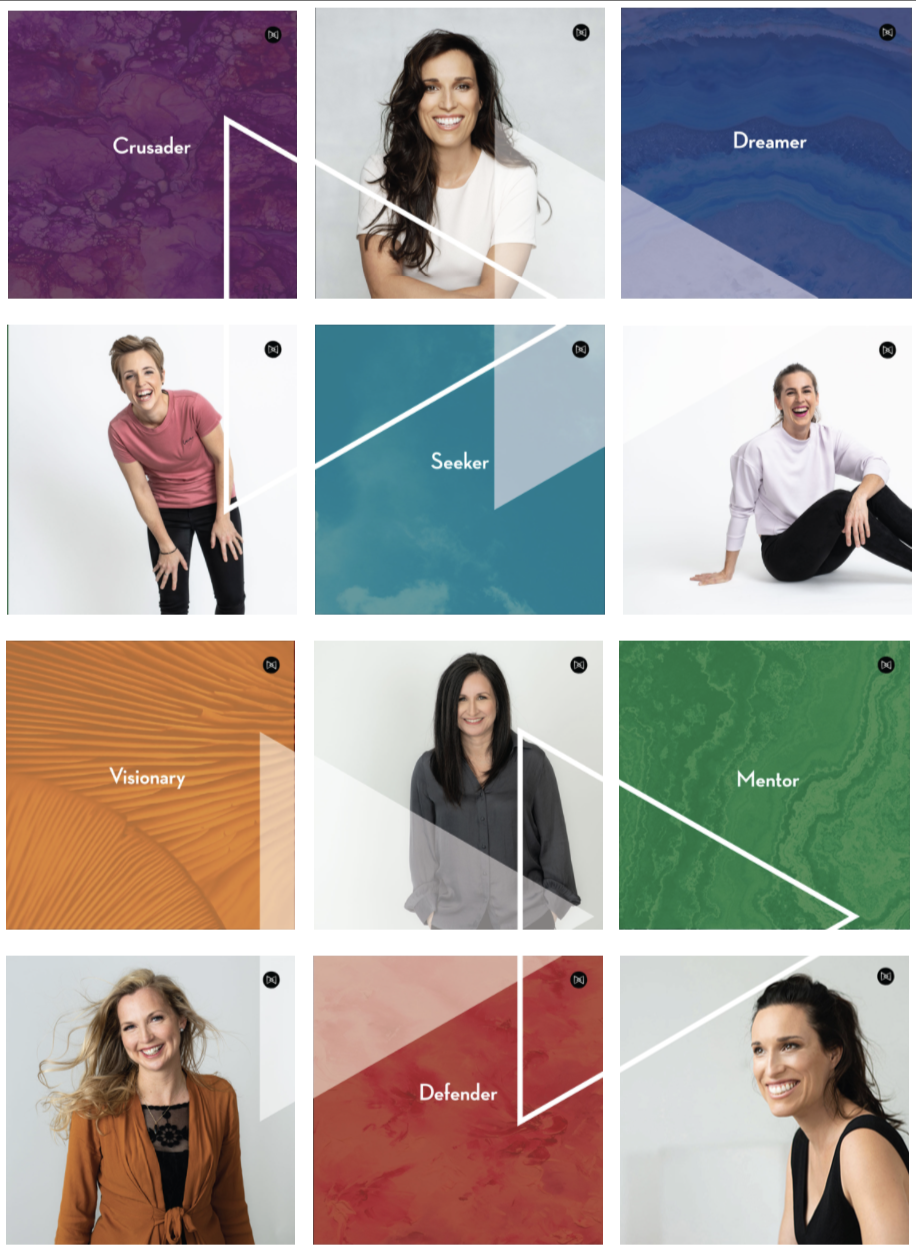

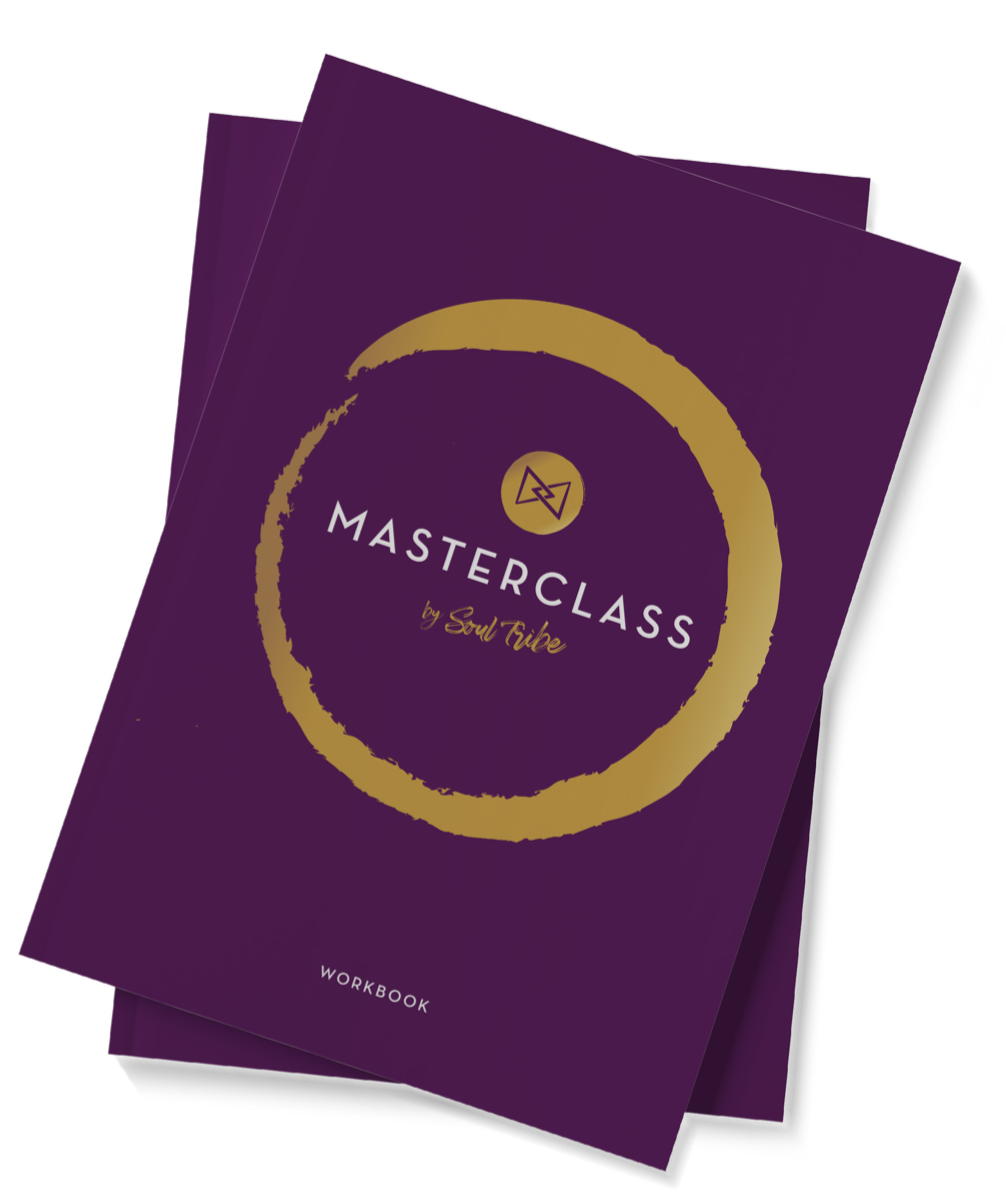


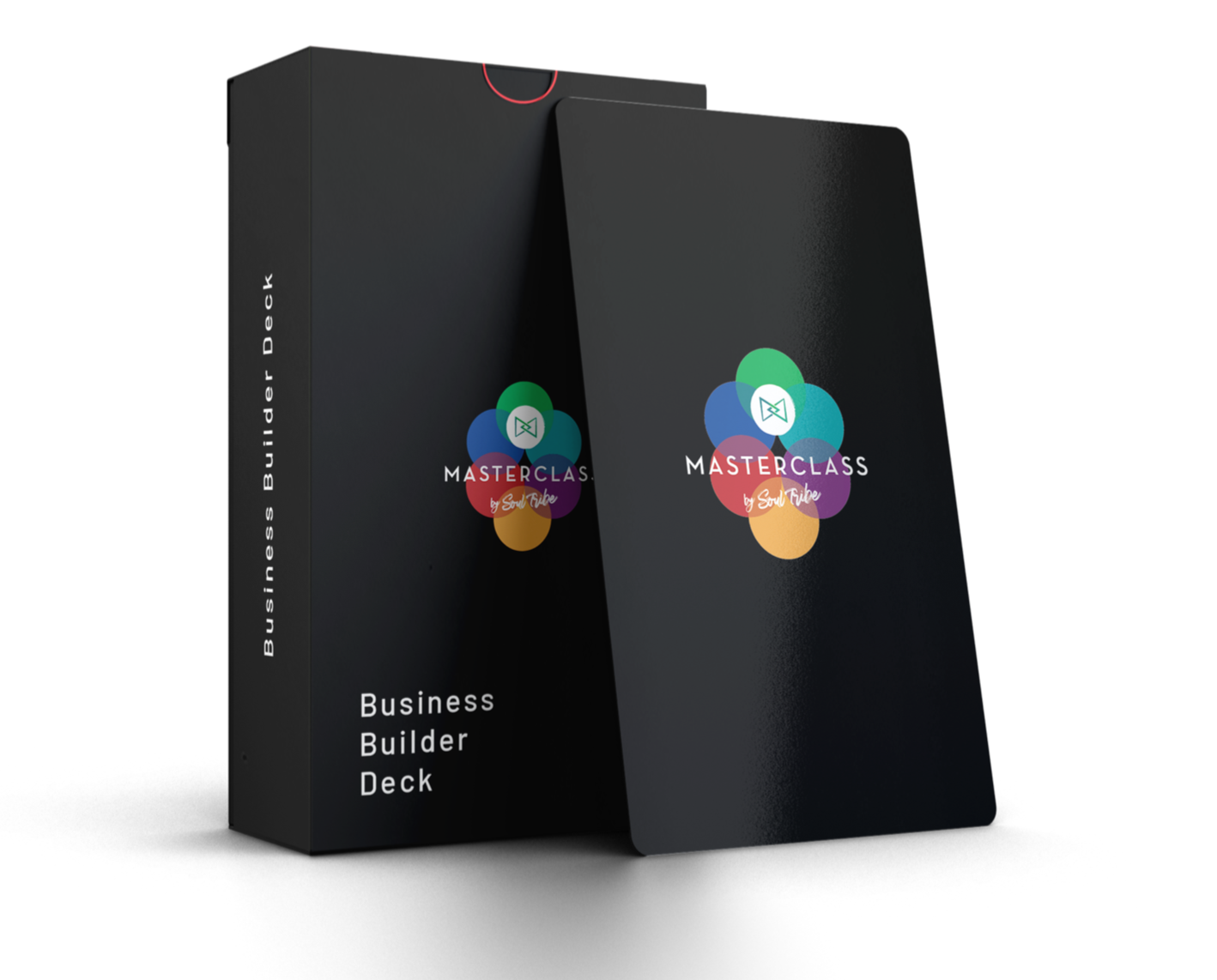

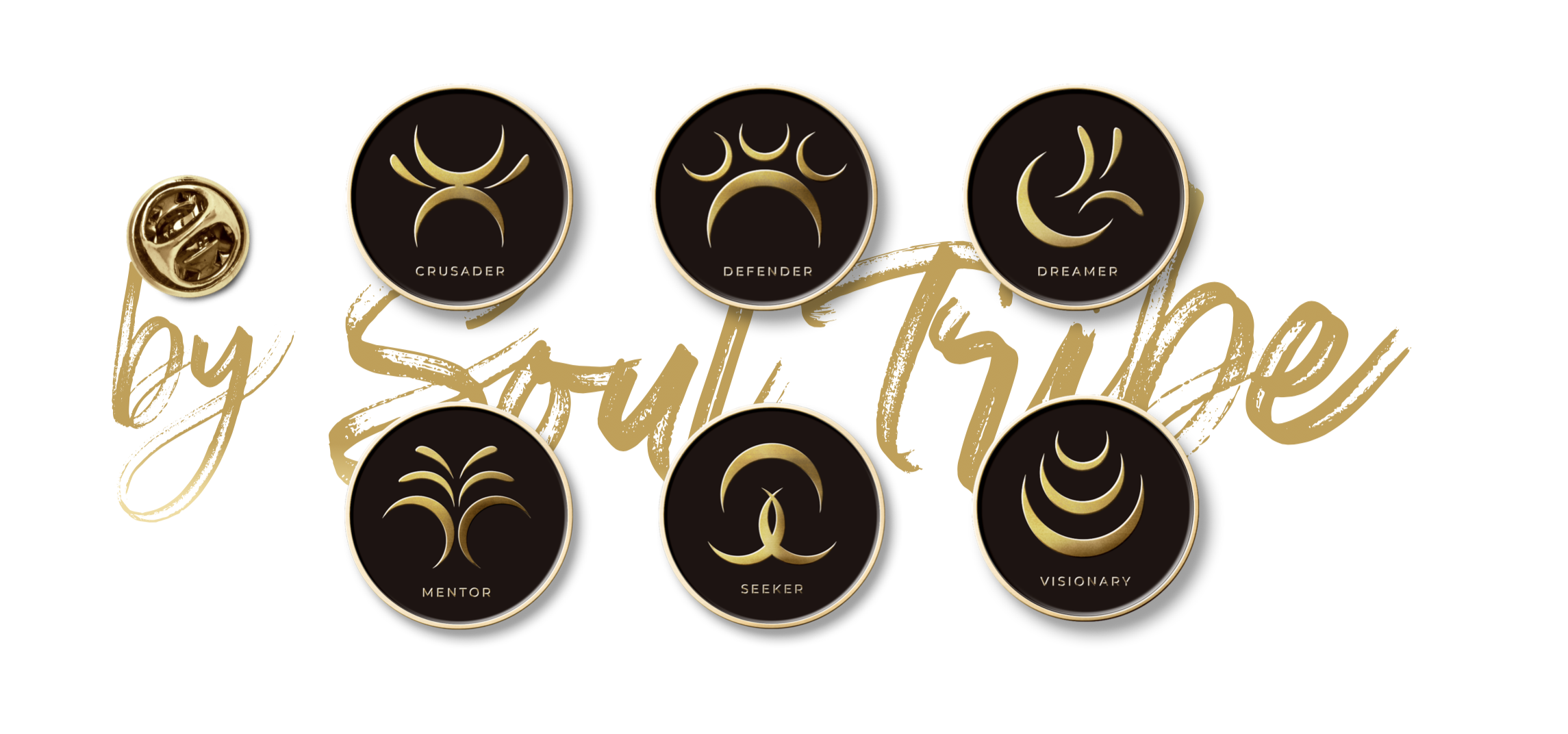


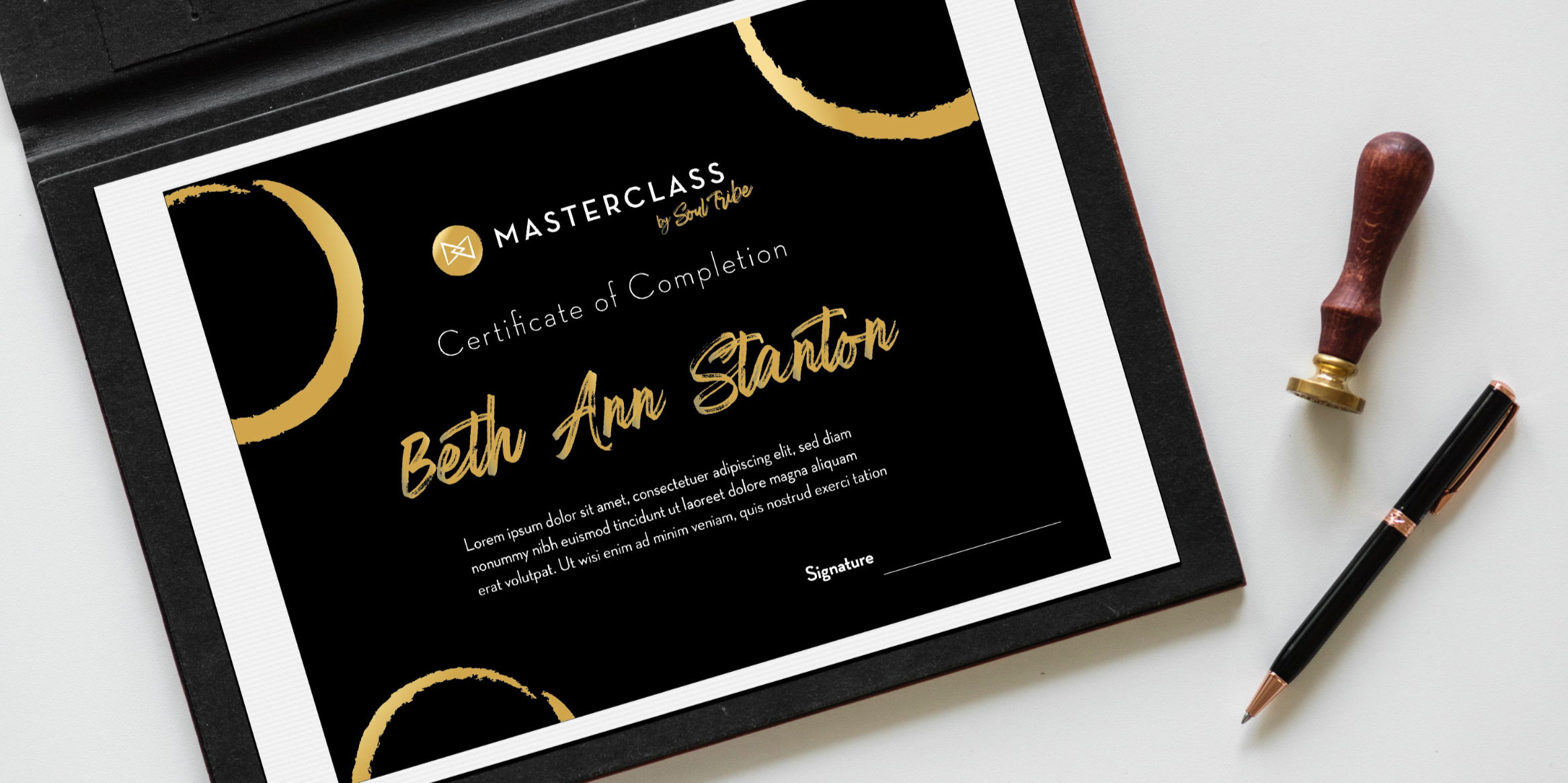


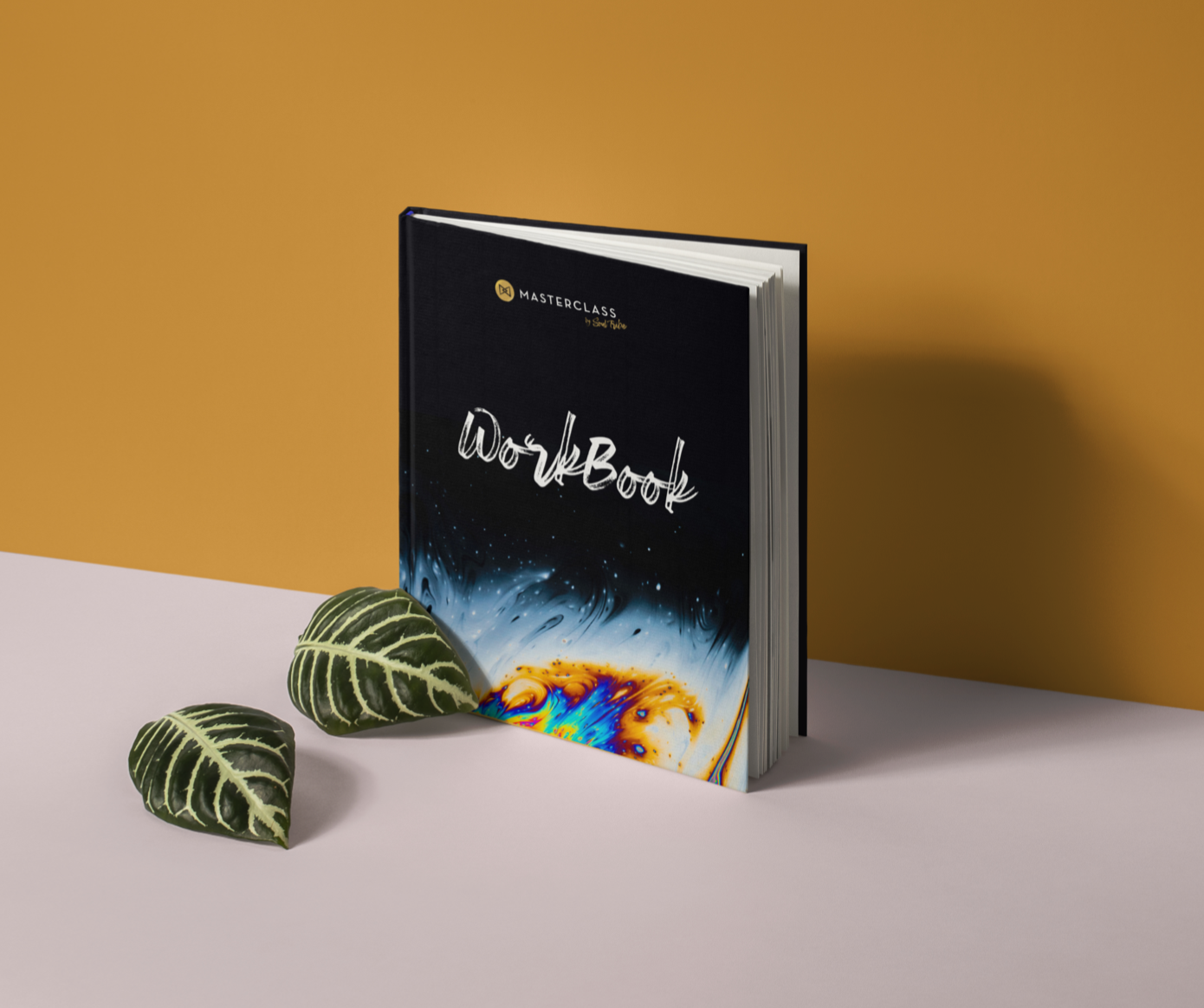
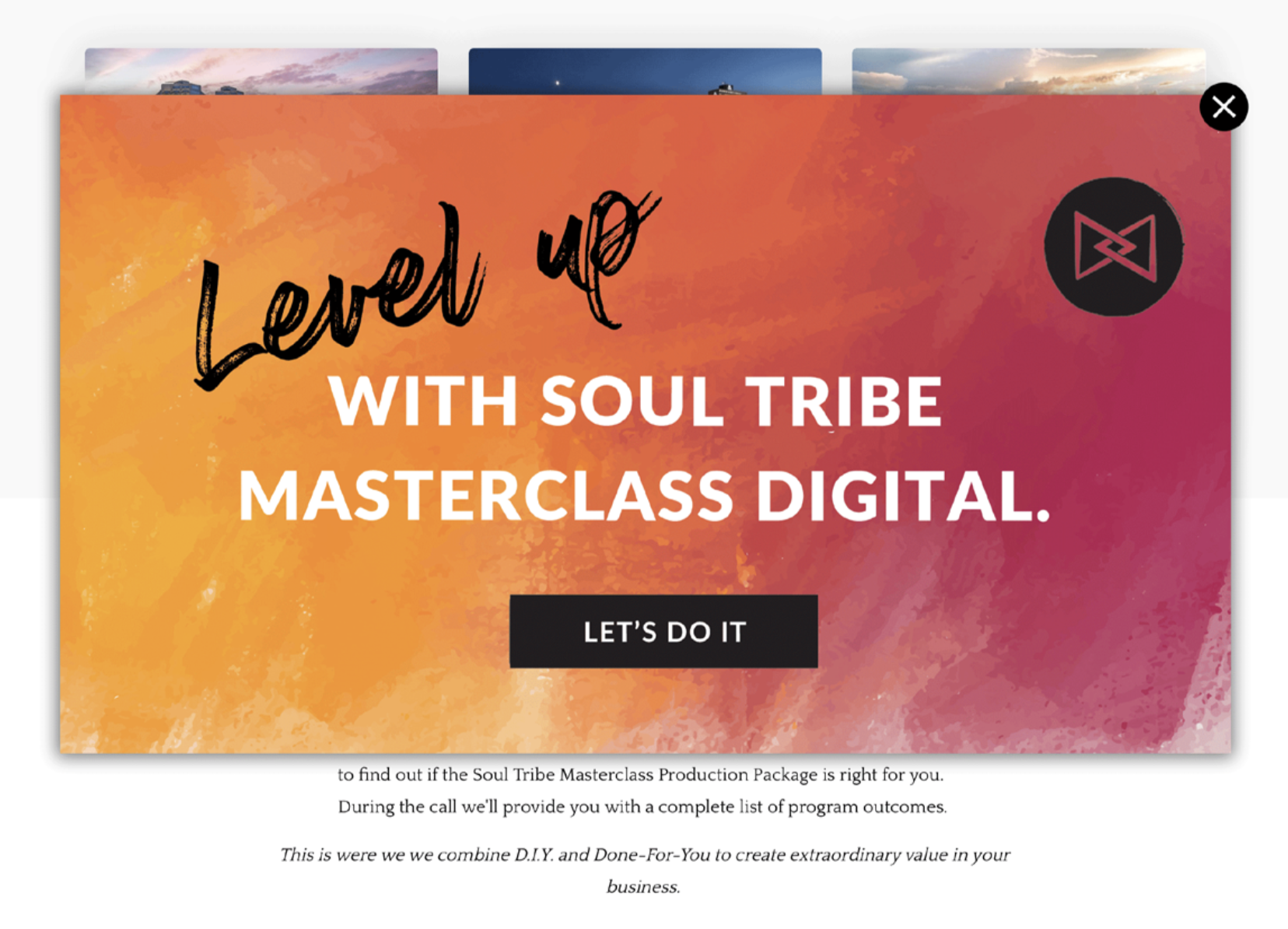


Graphics by Laura Publicover